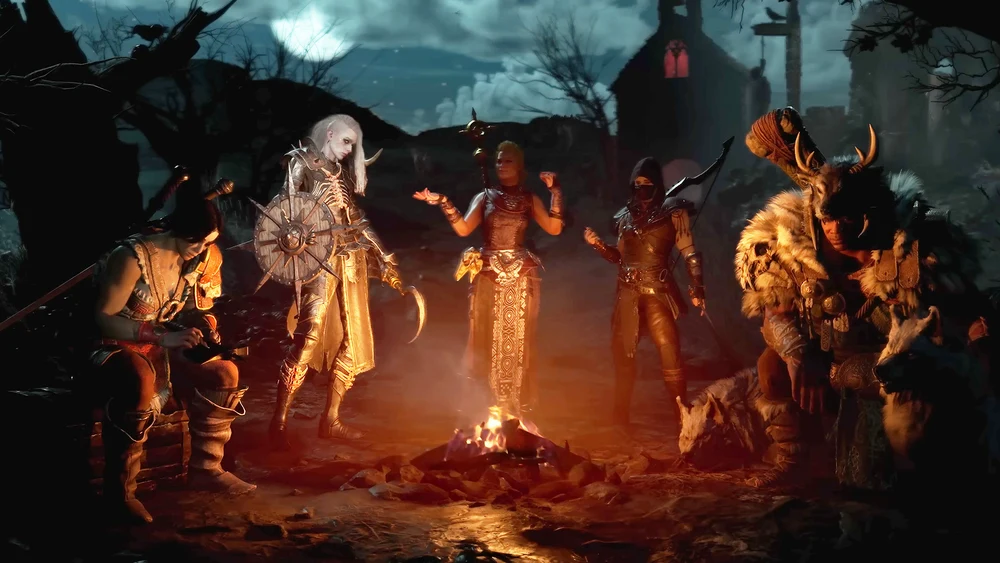In this Diablo 4 Guide we are going to cover everything, from classes and Endgame Content to walkthrough and collectibles.
Diablo 4 is the latest installment in the legendary action role-playing game (ARPG) series developed by Blizzard Entertainment. It is set in a dark and gritty world of Sanctuary, where players must fight against the forces of evil led by Lilith, the daughter of Mephisto and the mother of humanity. Diablo 4 promises to deliver a more immersive and dynamic experience than ever before, with endless possibilities for exploration, customization, and combat.
Diablo 4 Guide: Overview of Diablo 4
In this part of the Diablo 4 guide, we will have a overview of the game. Diablo 4 is an ARPG that combines fast-paced hack-and-slash gameplay with strategic decision-making and character progression. Players can choose from five different classes: Barbarian, Druid, Necromancer, Rogue, and Sorcerer, each with their own unique abilities, talents, and playstyles. Players can also customize their characters with various weapons, armor, skills, runes, and legendary items that grant powerful effects.
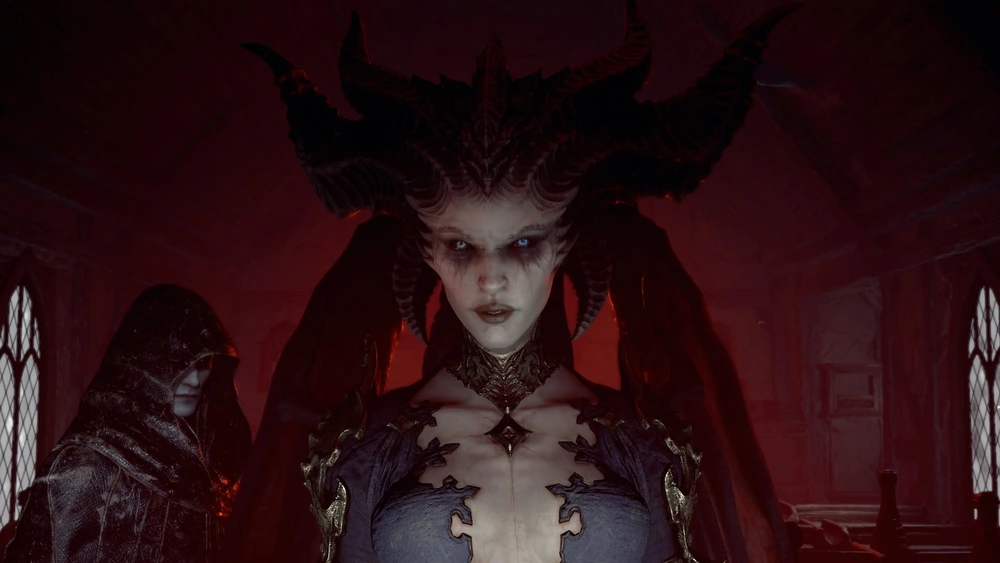
Diablo 4 is designed to be played solo or cooperatively with up to three other players online. Players can join forces to tackle challenging dungeons, quests, events, and world bosses, or compete against each other in player-versus-player (PVP) zones. Diablo 4 also features a shared open world that allows players to encounter and interact with other adventurers in towns and hubs.
Setting
Diablo 4 takes place many years after the events of Diablo 3, when the Prime Evil Diablo was defeated by the Nephalem heroes. However, the balance between Heaven and Hell has been shattered by a dark ritual that summoned Lilith back to Sanctuary. Lilith is a powerful demoness who was banished by her father Mephisto for creating the Nephalem, the first humans who possessed both angelic and demonic essence.
Lilith seeks to reclaim her rightful place as the ruler of Sanctuary and unleash her wrath upon her enemies. She commands a horde of monstrous creatures that spread terror and corruption across the land. The only hope for humanity lies in the hands of a new generation of heroes who must face their own inner demons and stop Lilith’s sinister plans.
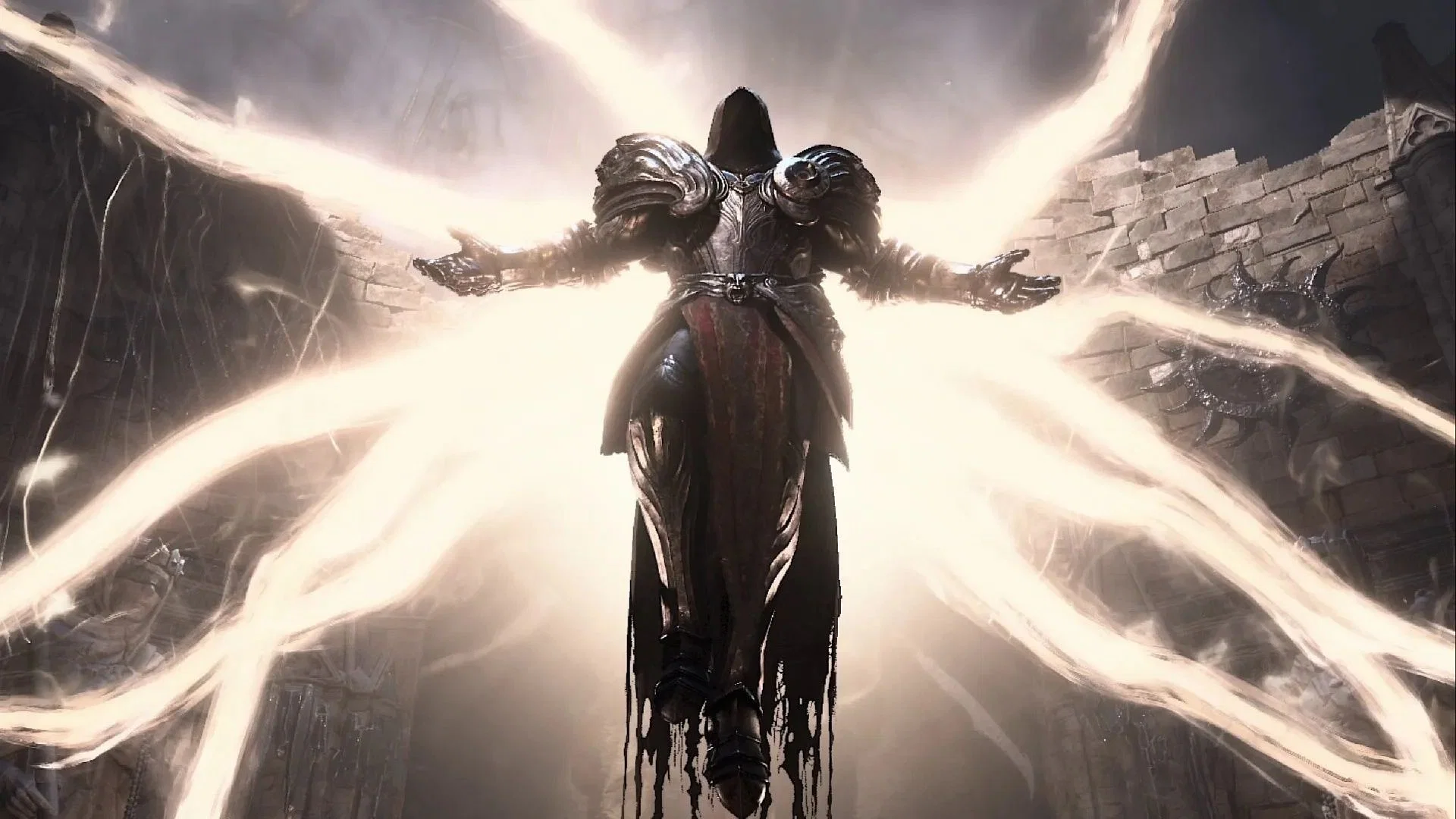
Diablo 4 features five regions that span different climates and cultures: Scosglen, Fractured Peaks, Dry Steppes, Hawezar, and Kehjistan. Each region has its own history, landmarks, secrets, and challenges. Players can explore these regions freely and discover dynamic events, environmental hazards, hidden treasures, and random encounters.
Story
Story will be the topic of this section of the Diablo 4 guide. Diablo 4’s story is divided into four acts that follow the main campaign. Each act has its own main quests that advance the plot and side quests that provide additional lore and rewards. The story is told through cinematic cutscenes, dialogue with NPCs, journals, books, and environmental clues.
The story begins in Scosglen, where a group of cultists led by a mysterious figure known as Rathma perform a ritual to resurrect Lilith using the blood of three ancient relics: the Anu Tear, the Worldstone Shard, and the Eye of Baal. The ritual succeeds but also unleashes a powerful shockwave that awakens an ancient evil: Duriel, the Lord of Pain.
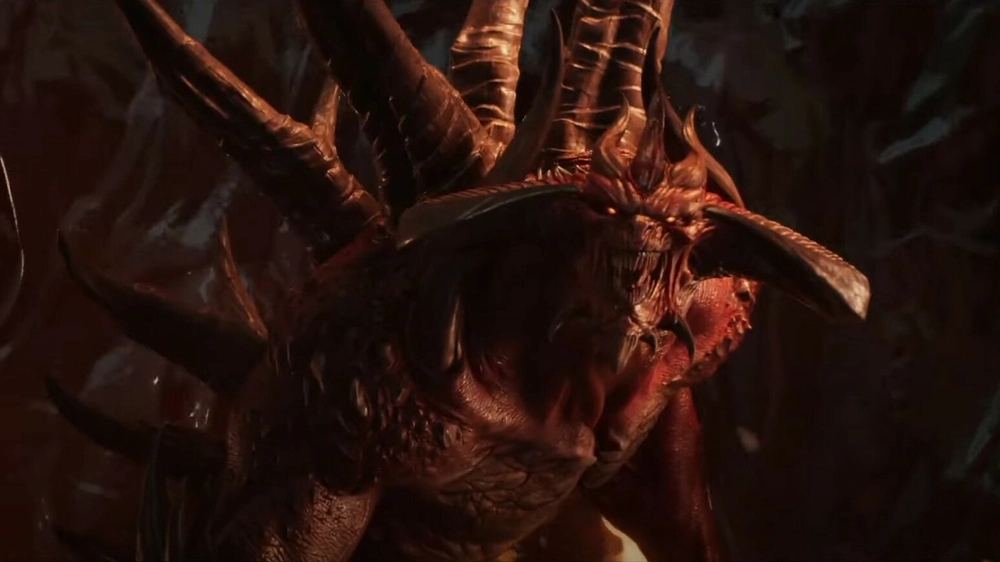
The heroes must travel across Sanctuary to stop Lilith and her minions from spreading chaos and destruction. Along the way, they will encounter allies and enemies from various factions and races, such as the Druids of Scosglen, the Barbarians of Mount Arreat, the Rogues of Westmarch, the Priests of Rathma (also known as Necromancers), the Sorcerers of Kehjistan (also known as Vizjerei), and more.
The story will also reveal more about the origins of Sanctuary, the Nephalem, and Lilith’s role in shaping the destiny of mankind.
Also read:
Features
Diablo 4 boasts many new features that enhance the gameplay experience and offer more variety and replayability. Some of these features are:
- A darker and more realistic art style that reflects the grim tone of the story and setting.
- A dynamic day-night cycle and weather system that affect the visuals and gameplay.
- A revamped skill system that allows players to unlock active skills by leveling up and passive skills by finding skill points in the world.
- A rune system that lets players modify their skills with different effects by combining two runes: one condition rune and one effect rune.
- A talent system that gives players access to specialized passive abilities for each class.
- A legendary system that grants unique bonuses to legendary items that can change how skills work or interact with each other.
- A mount system that lets players ride various animals to travel faster and access new areas.
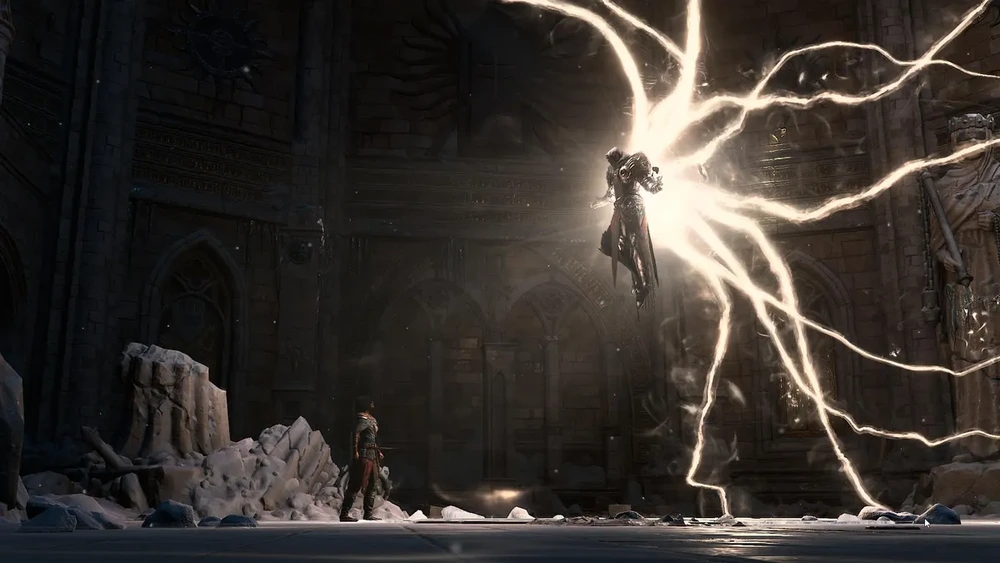
- A crafting system that lets players create their own items using materials gathered from enemies or salvaged from unwanted items.
- A trading system that lets players exchange items with other players using gold or other currencies.
- A stronghold system that lets players clear out enemy bases and claim them as their own hubs where they can access vendors, stash items, customize their appearance, etc.
- A PVP system that lets players mark themselves as hostile and enter PVP zones where they can fight other players for loot or glory.
Also read: Diablo 4 Review of Reviews
Diablo 4 Guide: Classes
In this Diablo 4 guide section, we will explore all the classes. Diablo 4 offers five different classes for players to choose from, each with their own unique strengths, weaknesses, playstyles, skills, talents, and builds. These are the Barbarian, Druid, Necromancer, Rogue, and Sorcerer. In this section, we will provide an overview of each class and what they bring to the table.
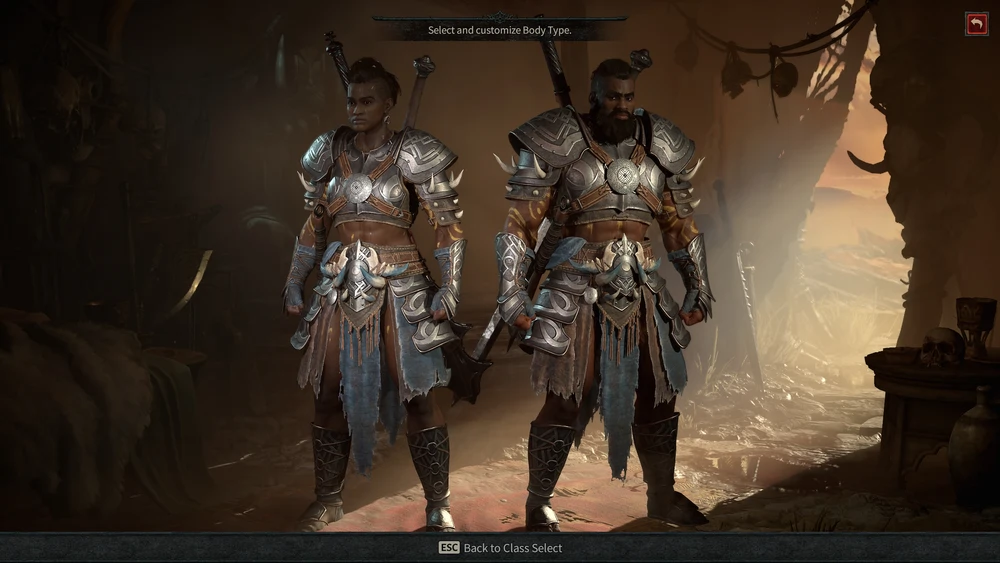
Barbarian
The Barbarian is the tanky and straightforward melee class of Diablo 4. They specialize in dealing high physical damage with various weapons and using warcries to buff themselves and their allies. They also have high health and movement speed, making them durable and mobile in combat.
The Barbarian’s unique mechanic is the Arsenal system, which allows them to equip four weapons at once and assign them to different skills. This gives them access to different weapon types and bonuses depending on the situation. For example, they can use a two-handed sword for a powerful slam attack, then switch to a pair of axes for a fast flurry of slashes.
The Barbarian’s skills are divided into three categories: Fury, Brawling, and Juggernaut. Fury skills are offensive abilities that consume Fury, the Barbarian’s resource. Brawling skills are defensive or utility abilities that generate Fury. Juggernaut skills are passive abilities that enhance the Barbarian’s survivability and damage output.
Some examples of Barbarian skills are:
- Hammer of the Ancients: A Fury skill that unleashes a massive hammer strike that deals damage and stuns enemies in an area.
- Whirlwind: A Fury skill that makes the Barbarian spin around with their weapon, hitting multiple enemies in a radius.
- Leap: A Brawling skill that makes the Barbarian jump to a location, dealing damage and knocking back enemies on landing.
- Shout: A Brawling skill that emits a powerful roar that increases the damage and resistance of the Barbarian and their allies for a duration.
- Bloodthirst: A Juggernaut skill that makes the Barbarian heal for a percentage of the damage they deal.
- Rampage: A Juggernaut skill that makes the Barbarian gain increased attack speed and movement speed for each enemy they kill.
The Barbarian’s talents are divided into four trees: Arsenal Mastery, Frenzy Mastery, Brutality Mastery, and Survival Mastery. Each tree has different nodes that grant bonuses to specific skills or aspects of the Barbarian’s gameplay. For example, Arsenal Mastery improves the Barbarian’s weapon swapping and damage with different weapon types. Frenzy Mastery enhances the Barbarian’s attack speed and critical chance. Brutality Mastery boosts the Barbarian’s damage with Fury skills and Bleed effects. Survival Mastery increases the Barbarian’s health and resistance.
Some examples of Barbarian talents are:
- Weapon Master: A talent in the Arsenal Mastery tree that makes the Barbarian gain increased damage for each weapon type they have equipped.
- Berserker Rage: A talent in the Frenzy Mastery tree that makes the Barbarian gain increased critical damage when their Fury is full.
- Rend: A talent in the Brutality Mastery tree that makes the Barbarian’s attacks apply a Bleed effect that deals damage over time.
- Tough as Nails: A talent in the Survival Mastery tree that makes the Barbarian gain increased armor and thorns damage.
The Barbarian is a great class for players who enjoy smashing enemies with brute force and being able to take a lot of hits. They are also easy to play and forgiving to mistakes, making them ideal for beginners or casual players.
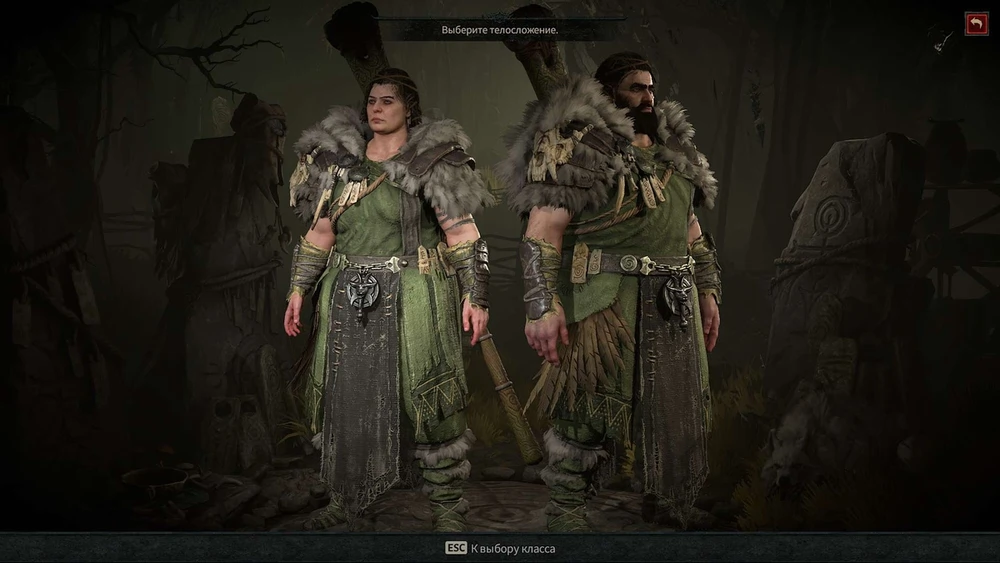
Druid
The Druid is the versatile and adaptable shapeshifter class of Diablo 4. They specialize in using nature magic and animal forms to deal damage, heal, or control enemies. They can also summon animal companions to aid them in battle.
The Druid’s unique mechanic is the Shapeshifting system, which allows them to transform between human, werewolf, and werebear forms at will. Each form has its own advantages and disadvantages, as well as access to different skills. For example, human form allows the Druid to cast spells from a distance, werewolf form grants increased attack speed and mobility, and werebear form provides increased health and damage.
The Druid’s skills are divided into three categories: Spirit, Storms, and Companions. Spirit skills are offensive abilities that consume Spirit, the Druid’s resource. Storms skills are defensive or utility abilities that generate Spirit. Companions skills are passive abilities that summon animal allies that fight alongside the Druid.
Some examples of Druid skills are:
- Maul: A Spirit skill that makes the Druid swipe their claws at an enemy in werewolf form, dealing damage and applying a Bleed effect.
- Earthspike: A Spirit skill that makes the Druid slam their paws on the ground in werebear form, creating a spike of earth that impales an enemy.
- Tornado: A Storms skill that makes the Druid conjure a whirlwind that travels in a direction, dealing damage and knocking back enemies it hits.
- Cyclone Armor: A Storms skill that makes the Druid surround themselves with swirling winds that absorb incoming damage for a duration.
- Raven: A Companions skill that summons a raven that flies around the Druid, pecking at nearby enemies.
- Wolf: A Companions skill that summons a wolf that follows the Druid, biting enemies and increasing their attack speed.
The Druid’s talents are divided into four trees: Shapeshifting Mastery, Spirit Mastery, Storms Mastery, and Companions Mastery. Each tree has different nodes that grant bonuses to specific skills or aspects of the Druid’s gameplay. For example, Shapeshifting Mastery improves the Druid’s shapeshifting speed and bonuses. Spirit Mastery enhances the Druid’s damage with Spirit skills and Bleed effects. Storms Mastery boosts the Druid’s defense with Storms skills and elemental resistance. Companions Mastery increases the Druid’s number and power of animal companions.
Some examples of Druid talents are:
- Primal Instinct: A talent in the Shapeshifting Mastery tree that makes the Druid gain increased critical chance when they shapeshift.
- Bloodlust: A talent in the Spirit Mastery tree that makes the Druid heal for a percentage of the Bleed damage they deal.
- Eye of the Storm: A talent in the Storms Mastery tree that makes the Druid gain increased damage reduction when they have Cyclone Armor active.
- Pack Leader: A talent in the Companions Mastery tree that makes all Companions skills summon an additional animal.
The Druid is a great class for players who enjoy having multiple options and flexibility in combat. They can adapt to any situation by switching between forms and skills as needed. They can also play solo or cooperatively with their animal friends.
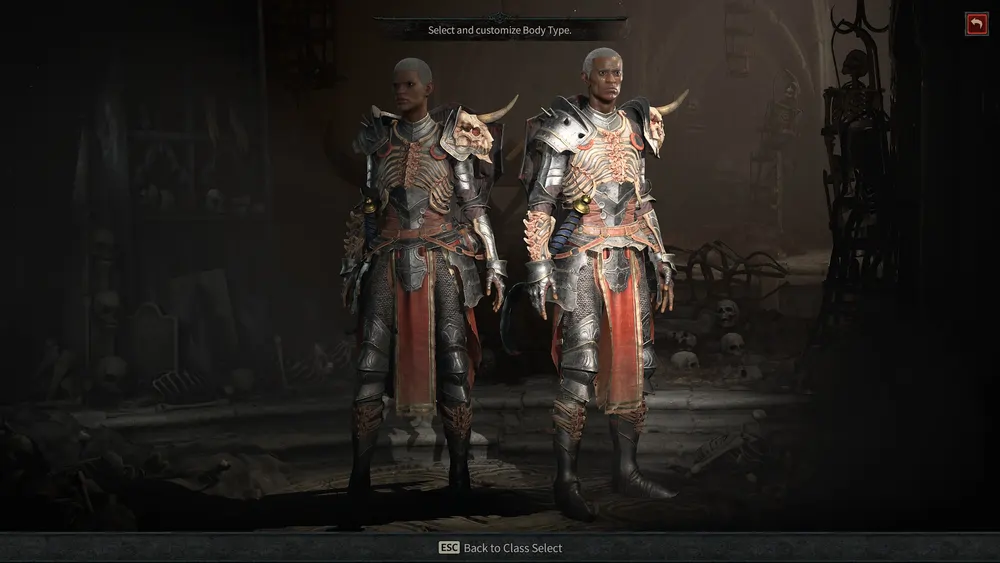
Necromancer
The Necromancer is the dark and sinister summoner class of Diablo 4. They specialize in using necromantic magic and undead minions to deal damage, debuff enemies, or manipulate corpses. They can also use their own life force as a resource for powerful effects.
The Necromancer’s unique mechanic is the Essence system, which allows them to use three different types of Essence: Bone Essence (white), Blood Essence (red), or Shadow Essence (purple). Each type of Essence corresponds to one of their Bastions (Bone Bastion, Blood Bastion, or Shadow Bastion), which are specialized skill trees that grant bonuses to specific skills or aspects of the Necromancer’s gameplay. For example, Bone Bastion enhances the Necromancer’s damage with bone skills and corpse explosions. Blood Bastion enhances the Necromancer’s healing and survivability with blood skills and life drain effects. Shadow Bastion enhances the Necromancer’s stealth and mobility with shadow skills and teleportation effects.
The Necromancer’s skills are divided into three categories: Reanimation, Curses, and Corpses. Reanimation skills are offensive abilities that summon undead minions or golems that fight alongside the Necromancer. Curses skills are defensive or utility abilities that apply debuffs to enemies or buffs to allies. Corpses skills are offensive abilities that consume corpses to deal damage or create effects.
Some examples of Necromancer skills are:
- Skeletons: A Reanimation skill that summons a group of skeletons that attack enemies with melee or ranged weapons.
- Golem: A Reanimation skill that summons a large golem that can be commanded to perform different actions depending on its type (flesh, bone, blood, etc.).
- Frailty: A Curses skill that marks enemies with a curse that makes them die instantly when their health drops below a threshold.
- Leech: A Curses skill that marks enemies with a curse that makes them heal the Necromancer and their allies when they take damage.
- Corpse Explosion: A Corpses skill that makes a corpse explode, dealing damage to nearby enemies.
- Corpse Lance: A Corpses skill that makes a corpse launch a piercing lance at an enemy, dealing damage and applying a Bleed effect.
The Necromancer’s talents are divided into four trees: Bone Mastery, Blood Mastery, Shadow Mastery, and Reanimation Mastery. Each tree has different nodes that grant bonuses to specific skills or aspects of the Necromancer’s gameplay. For example, Bone Mastery improves the Necromancer’s damage with bone skills and corpse explosions. Blood Mastery improves the Necromancer’s healing and survivability with blood skills and life drain effects. Shadow Mastery improves the Necromancer’s stealth and mobility with shadow skills and teleportation effects. Reanimation Mastery improves the Necromancer’s number and power of undead minions and golems.
Some examples of Necromancer talents are:
- Bone Spikes: A talent in the Bone Mastery tree that makes the Necromancer’s bone skills create spikes on the ground that impale enemies.
- Hemorrhage: A talent in the Blood Mastery tree that makes the Necromancer’s blood skills cause enemies to bleed profusely, dealing damage over time.
- Dark Passage: A talent in the Shadow Mastery tree that makes the Necromancer’s shadow skills create portals that they can use to travel quickly.
- Army of the Dead: A talent in the Reanimation Mastery tree that makes the Necromancer’s reanimation skills summon additional undead minions.
The Necromancer is a great class for players who enjoy controlling an army of undead and using dark magic to weaken their foes. They are also very versatile and can adapt to different situations by switching between their Bastions and Essences.
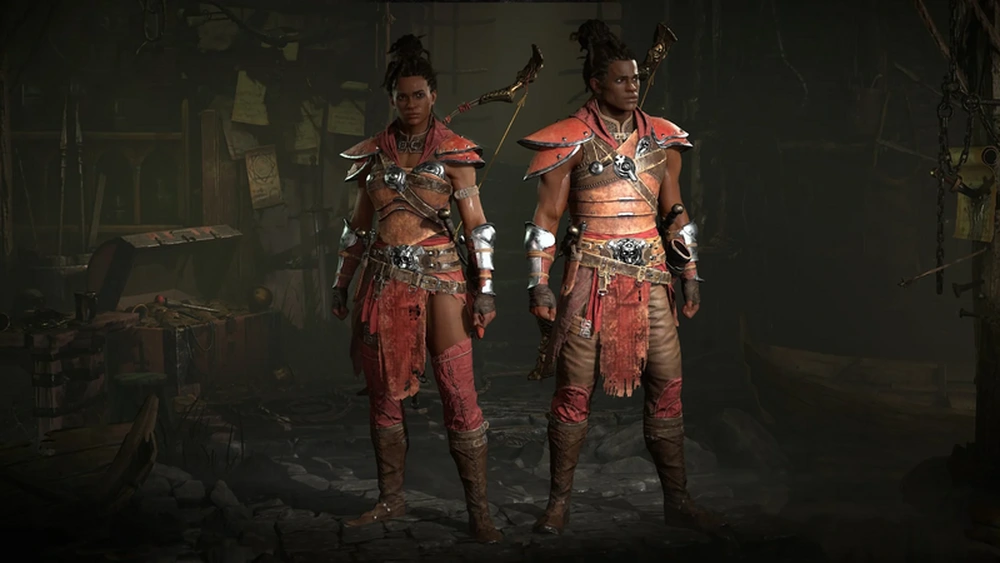
Rogue
The Rogue is the agile and nimble dexterity class of Diablo 4. They specialize in dealing high damage with melee or ranged weapons and using poisons, cold, or shadow magic to enhance their attacks. They can also dash and evade to avoid enemy attacks and reposition themselves.
The Rogue’s unique mechanic is the Imbuement system, which allows them to infuse their weapons with one of three elements: poison, cold, or shadow. Each element has its own effects and benefits depending on the situation. For example, poison deals damage over time and reduces enemy healing. Cold slows down enemies and increases critical damage. Shadow grants stealth and increases movement speed.
The Rogue’s skills are divided into three categories: Combo, Weapon, and Utility. Combo skills are offensive abilities that can be chained together to perform powerful combo attacks. Weapon skills are offensive abilities that use the Rogue’s equipped weapon to deal damage. Utility skills are defensive or utility abilities that provide mobility, evasion, or crowd control.
Some examples of Rogue skills are:
- Flurry: A Combo skill that makes the Rogue unleash a series of rapid slashes with their melee weapon, dealing damage and applying a Bleed effect.
- Finisher: A Combo skill that makes the Rogue perform a devastating strike with their melee weapon, dealing damage based on the number of combo points they have accumulated.
- Multishot: A Weapon skill that makes the Rogue fire multiple arrows at once, hitting multiple enemies in a cone.
- Fan of Knives: A Weapon skill that makes the Rogue throw a barrage of knives around them, dealing damage and applying a poison effect.
- Dash: A Utility skill that makes the Rogue dash to a location, avoiding enemy attacks and increasing their attack speed for a duration.
- Smoke Bomb: A Utility skill that makes the Rogue drop a smoke bomb at their feet, creating a cloud of smoke that blinds enemies and grants stealth to the Rogue and their allies.
The Rogue’s talents are divided into four trees: Melee Mastery, Ranged Mastery, Imbuement Mastery, and Evasion Mastery. Each tree has different nodes that grant bonuses to specific skills or aspects of the Rogue’s gameplay. For example, Melee Mastery improves the Rogue’s damage and critical chance with melee weapons and combo skills. Ranged Mastery improves the Rogue’s damage and accuracy with ranged weapons and weapon skills. Imbuement Mastery improves the Rogue’s effects and bonuses with poison, cold, or shadow imbuements. Evasion Mastery improves the Rogue’s mobility and survivability with utility skills and evasion mechanics.
Some examples of Rogue talents are:
- Slice and Dice: A talent in the Melee Mastery tree that makes the Rogue’s combo skills deal increased damage and generate more combo points.
- Piercing Shot: A talent in the Ranged Mastery tree that makes the Rogue’s weapon skills pierce through enemies and deal increased damage for each enemy hit.
- Toxicity: A talent in the Imbuement Mastery tree that makes the Rogue’s poison imbuement deal increased damage over time and spread to nearby enemies.
- Shadow Dance: A talent in the Evasion Mastery tree that makes the Rogue gain increased movement speed and damage while stealthed.
The Rogue is a great class for players who enjoy dealing high damage with melee or ranged weapons and using elemental effects to enhance their attacks. They are also very fast and agile, making them fun to play and hard to hit.
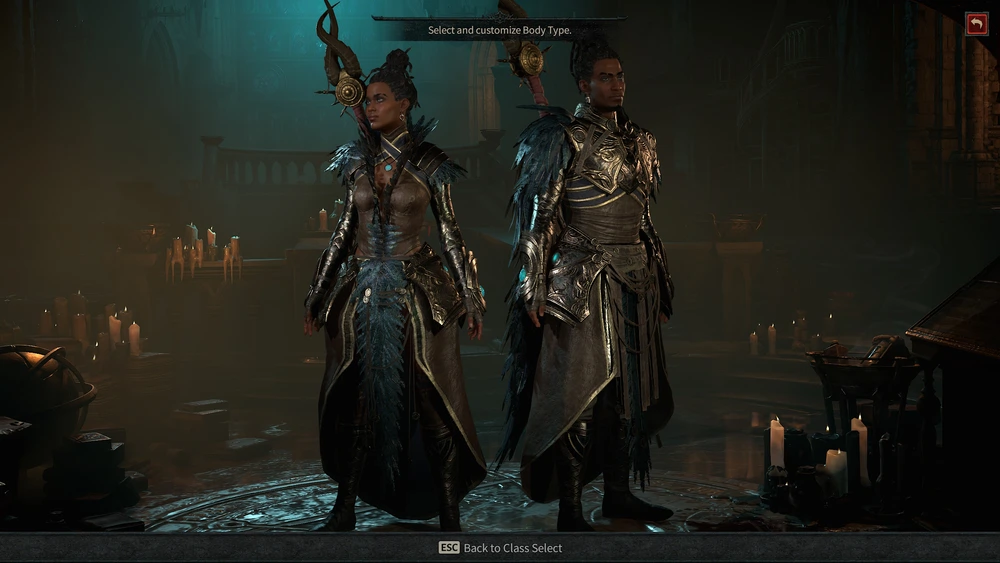
Sorcerer
The Sorcerer is the traditional and powerful spellcaster class of Diablo 4. They specialize in using elemental magic to deal damage, control enemies, or protect themselves. They can also shape the elements to suit their needs and preferences.
The Sorcerer’s unique mechanic is the Enchantment system, which allows them to equip active skills as passive enchantments. Each enchantment grants a bonus effect related to the skill it replaces. For example, equipping Fireball as an enchantment makes the Sorcerer’s attacks have a chance to launch a fireball at an enemy. Equipping Frost Nova as an enchantment makes the Sorcerer emit a frost nova when they are hit by an enemy.
The Sorcerer’s skills are divided into three categories: Fire, Cold, and Lightning. Fire skills are offensive abilities that deal fire damage and ignite enemies. Cold skills are defensive or utility abilities that deal cold damage and chill or freeze enemies. Lightning skills are offensive abilities that deal lightning damage and shock or stun enemies.
Some examples of Sorcerer skills are:
- Fireball: A Fire skill that makes the Sorcerer hurl a ball of fire at an enemy, dealing damage and igniting them.
- Meteor: A Fire skill that makes the Sorcerer summon a meteor from the sky that crashes down on an area, dealing damage and leaving a burning ground effect.
- Frost Nova: A Cold skill that makes the Sorcerer release a blast of cold around them, dealing damage and freezing enemies.
- Blizzard: A Cold skill that makes the Sorcerer conjure a storm of ice shards that rain down on an area, dealing damage and chilling enemies.
- Lightning Bolt: A Lightning skill that makes the Sorcerer fire a bolt of lightning at an enemy, dealing damage and shocking them.
- Chain Lightning: A Lightning skill that makes the Sorcerer unleash a stream of lightning that jumps between enemies, dealing damage and stunning them.
The Sorcerer’s talents are divided into four trees: Fire Mastery, Cold Mastery, Lightning Mastery, and Elemental Mastery. Each tree has different nodes that grant bonuses to specific skills or aspects of the Sorcerer’s gameplay. For example, Fire Mastery improves the Sorcerer’s damage and critical chance with fire skills and ignite effects. Cold Mastery improves the Sorcerer’s defense and crowd control with cold skills and chill or freeze effects. Lightning Mastery improves the Sorcerer’s damage and attack speed with lightning skills and shock or stun effects. Elemental Mastery improves the Sorcerer’s versatility and efficiency with all elemental skills and enchantments.
Some examples of Sorcerer talents are:
- Pyromaniac: A talent in the Fire Mastery tree that makes the Sorcerer gain increased damage for each enemy they have ignited.
- Shatter: A talent in the Cold Mastery tree that makes the Sorcerer deal increased damage to frozen enemies and have a chance to shatter them.
- Overload: A talent in the Lightning Mastery tree that makes the Sorcerer gain increased attack speed for each enemy they have shocked.
- Elemental Attunement: A talent in the Elemental Mastery tree that makes the Sorcerer gain increased damage for each different element they have used recently.
The Sorcerer is a great class for players who enjoy using elemental magic to deal damage, control enemies, or protect themselves. They are also very flexible and customizable, making them able to adapt to different situations by changing their skills and enchantments.
Diablo 4 Guide: Walkthrough
This is the section of the Diablo 4 guide where we will talk about the main acts of the game. Diablo 4 is a hack-and-slash action RPG that takes place in the dark and gritty world of Sanctuary, where the forces of Heaven and Hell wage an eternal war. The game features a vast open world that can be explored solo or with up to three other players in co-op mode. The game also features five different classes to choose from, each with their own unique skills, talents, and playstyles.
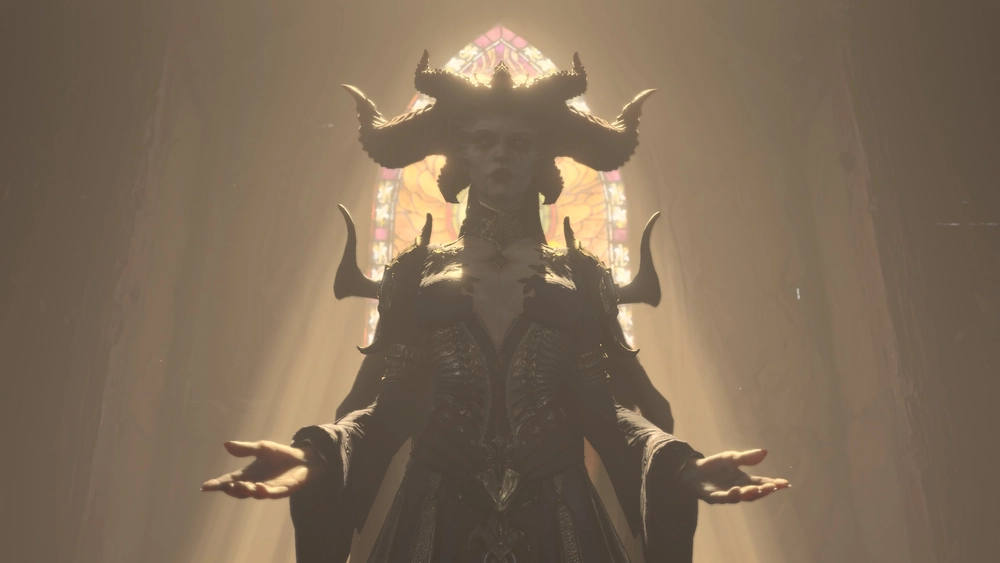
This walkthrough will guide you through the main campaign of Diablo 4, divided by acts and quests. It will also provide tips for navigating the open world, solving puzzles, finding secrets, and defeating bosses. The walkthrough is based on the data from this week, so some details may change in the final version of the game.
Diablo 4 Guide: Prologue: Wandering
In this section of the Diablo 4 guide, we will explore the Prologue. The prologue of Diablo 4 introduces you to the basic gameplay mechanics and the story of the game. You will start as a wandering adventurer in the Fractured Peaks, a snowy mountain region that is home to the Monks of Ivgorod. You will encounter a mysterious woman named Lilith, who claims to be your guide and offers you a choice of four classes: Barbarian, Rogue, Druid, Sorcerer, or Necromancer. Each class has its own unique skills, weapons, and playstyle, so choose wisely.
The prologue consists of eight quests that will take you through various locations in the Fractured Peaks, such as Kyovashad, Icehowl Ruins, The Frozen Caverns, and The Shattered Gate. Along the way, you will learn how to use your skills, interact with NPCs and objects, loot items and equipment, craft and upgrade your gear, level up and customize your character, and fight enemies and bosses.
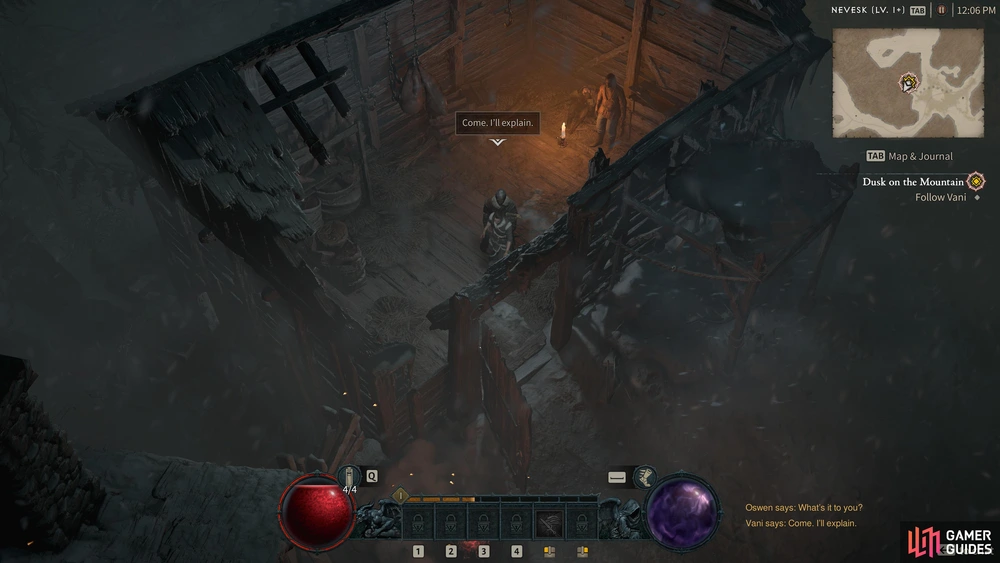
Dusk on the Mountain
This is the part of the Diablo 4 guide where we will discuss Dusk on the Mountain. This quest starts after you create your character and watch the opening cutscene. You will wake up in a cave in the Fractured Peaks and need to find shelter from the storm.
- Follow the yellow arrow on your mini-map to find your next objective. You can also press M to open the full map and see more details.
- Exit the cave and head down the mountain path. You will encounter some Wargs along the way. Use your skills and dodge roll to fight them off.
- Continue down the path until you reach a gate that leads to Nevesk, a small abandoned town. Enter the gate and follow the sound of a woman’s voice to a house on the left. Enter the door and talk to Oswen, Vani, and a man who’s rambling about demons spilling from the ruins.
- Follow Vani outside and into a small tavern filled with other villagers. Talk to her again to learn more about where you are and what’s happening. You can also talk to Stanis the Healer and Isbel the Armor Vendor if you need to heal or buy some gear.
- Vani will ask you to protect them from whatever’s out there and give you a new objective: explore Icehowl Ruins.
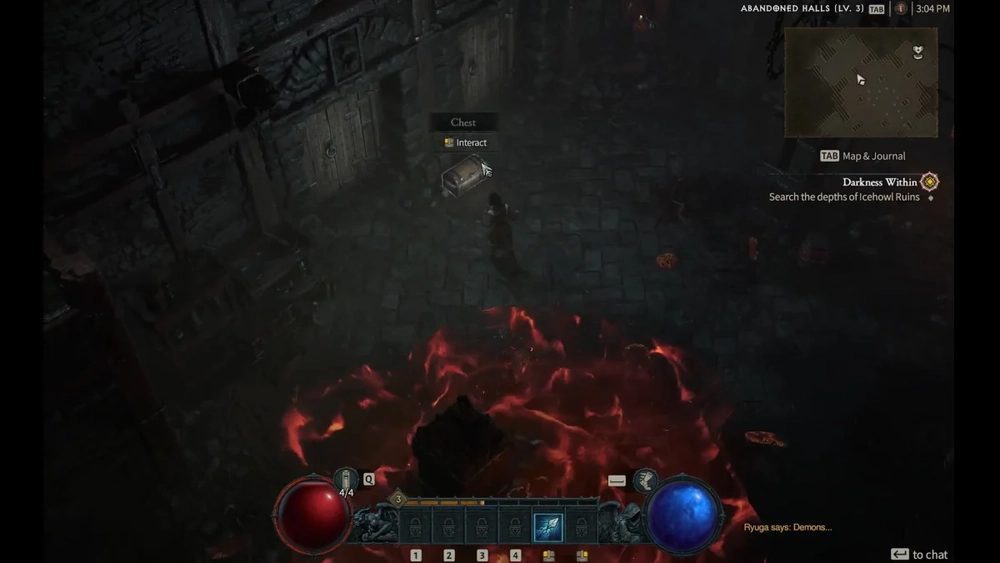
Darkness Within
Darkness Within will be the topic of this section of the Diablo 4 guide. This quest starts after you accept Vani’s request to explore Icehowl Ruins. You will need to enter the dungeon north of Nevesk and find out what’s causing the demonic invasion.
- Exit Nevesk and head north to Icehowl Ruins. You will encounter more enemies along the way, such as Fallen Ones, Fallen Shamans, Fallen Hounds, Skeletons, Skeleton Archers, Skeleton Mages, Zombies, Ghouls, Wraiths, Bats, Spiders, Icehowls, Icehowl Alphas, Icehowl Shamans, Icehowl Runners, Icehowl Maulers, and Icehowl Brutes. Use your skills and dodge roll to fight them off.
- Enter Icehowl Ruins through the gate. This will be your first dungeon in Diablo 4. Dungeons are randomly generated areas that contain enemies, loot, puzzles, and bosses.
- Follow the linear path until you reach a room with two doors: one on the right and one ahead. The door on the right is empty, but the door ahead leads to more enemies and a treasure chest on the right side of the room.
- After looting the chest, head through either door ahead to a large hall with more enemies and two more doors: one on the left and one on the right. The door on the left leads to a dead end with some loot, while the door on the right leads to the next area.
- In the next area, you will find a large circular room with a hole in the middle and four doors around it. The hole leads to a lower level with more enemies and a treasure chest, while the doors lead to different parts of the dungeon. You can explore them in any order, but you will need to go through all of them eventually.
- The door on the north leads to a long corridor with some enemies and a puzzle at the end. The puzzle involves rotating four tiles with symbols on them until they match the symbols on the wall above them. The solution is shown below:
- After solving the puzzle, a secret door will open behind it, revealing a hidden room with a treasure chest and a lore book called “The Worldstone”. Loot them both, then head back to the circular room.
- The door on the east leads to a small room with some enemies and a lever on the wall. Pulling the lever will open a gate on the south side of the circular room, allowing you access to a new area. Head back to the circular room and go through the gate.
- In the new area, you will find another large hall with more enemies and two doors: one on the left and one on the right. The door on the left leads to a dead end with some loot, while the door on the right leads to another puzzle at the end of a corridor. The puzzle involves pressing four buttons in a certain order until they light up green. The solution is shown below:
- After solving the puzzle, another secret door will open behind it, revealing another hidden room with a treasure chest and a lore book called “Lilith”. Loot them both, then head back to the large hall.
- The door on the south leads to a small room with some enemies and another lever on the wall. Pulling the lever will open another gate on the west side of the circular room, allowing you access to another new area. Head back to the circular room and go through the gate.
- In the new area, you will find another large hall with more enemies and two doors: one on the left and one on the right. The door on the left leads to another dead end with some loot, while the door on the right leads to another puzzle at the end of a corridor. The puzzle involves moving four objects (a skull, a candle, a book, and a dagger) onto four pedestals that match their shapes until they light up green. The solution is shown below:
- After solving the puzzle, another secret door will open behind it, revealing another hidden room with a treasure chest and a lore book called “Inarius”. Loot them both, then head back to the large hall.
- The door on the west leads to an elevator that takes you down to the lower level of the dungeon. This is where you will face your first boss: X’Fal, The Scarred Baron.
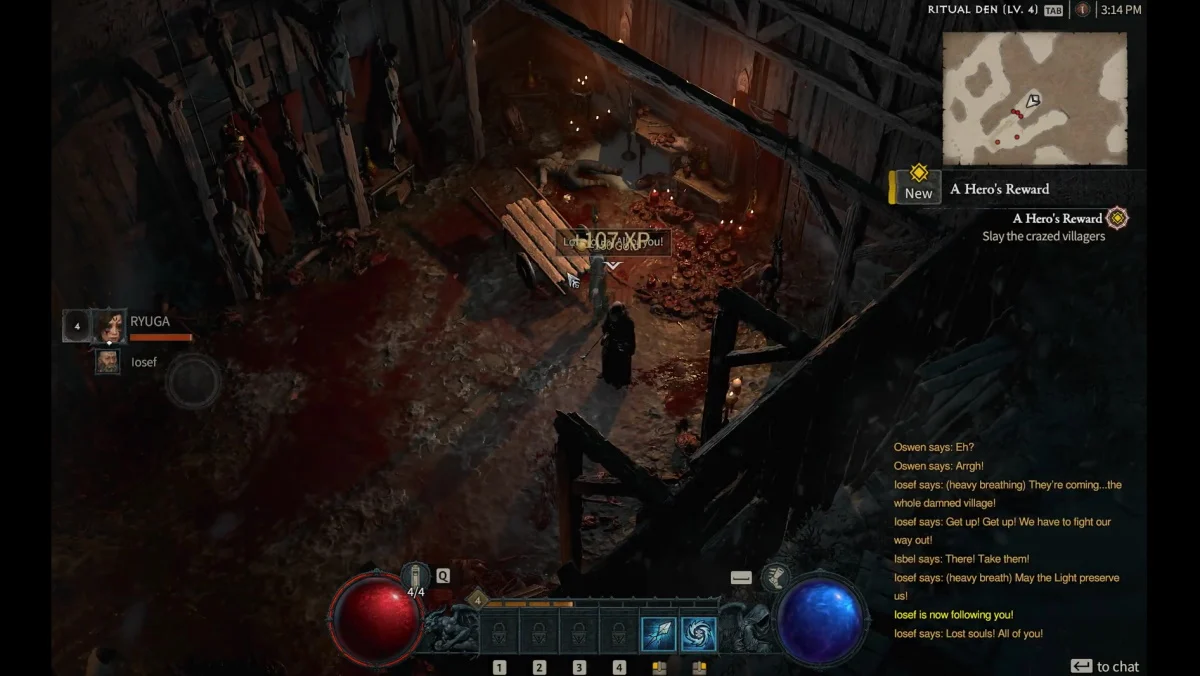
A Hero’s Return
- We will cover A Hero’s Return in this part of the Diablo 4 guide. This quest starts after you defeat X’Fal, The Scarred Baron in Icehowl Ruins. You will need to return to Nevesk and report your findings.
- Exit Icehowl Ruins through the elevator that brought you down. You will find yourself in a different part of Fractured Peaks than before. Follow the path until you reach another gate that leads back to Nevesk.
- Enter Nevesk and head back to Vani in the tavern. Talk to her and tell her what happened in Icehowl Ruins. She will be grateful for your help and reward you with some gold and items. She will also tell you that Oswen has something for you as well.
- Exit the tavern and head back to Oswen’s house. Talk to him and he will give you Lilith’s pendant, a device that can detect worldstone shards nearby. He will explain that worldstone shards are fragments of an ancient artifact that was shattered by an angel long ago. He will also tell you that Lilith is looking for them for some reason and that you should collect them before she does.
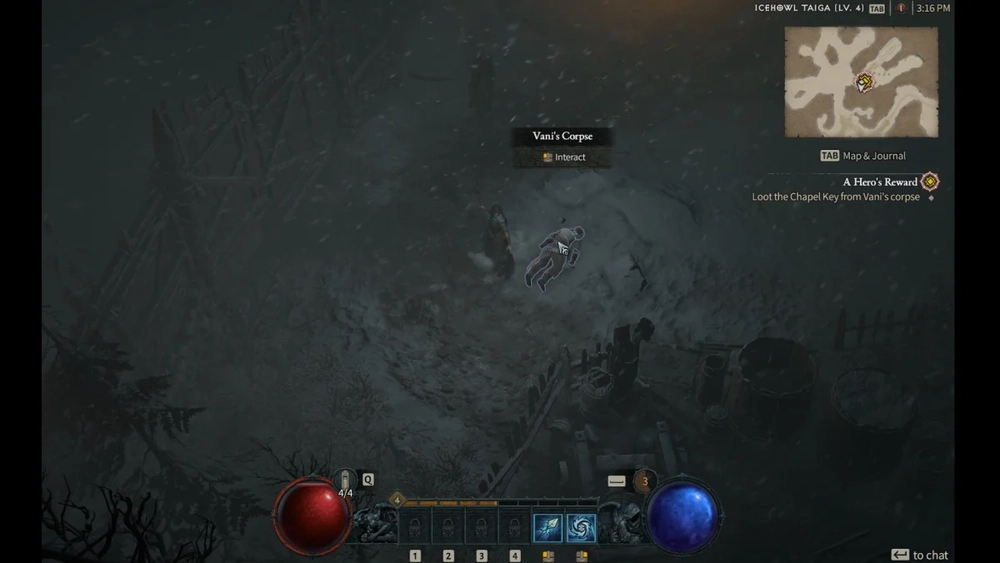
A Hero’s Reward
This part of the Diablo 4 guide focuses on A Hero’s Reward. This quest starts after you receive Lilith’s pendant from Oswen. You will need to use it to find and collect worldstone shards in the Fractured Peaks.
-
Exit Oswen’s house and press Q to activate Lilith’s pendant. You will see a blue circle on your mini-map that indicates the direction and distance of the nearest worldstone shard. Follow the circle until you reach the shard’s location.
-
Collect the worldstone shard by interacting with it. You will gain some worldstone power, a resource that you can use to enhance your skills, attributes, or items at Lilith’s altar. You will also trigger a cutscene where Lilith will speak to you telepathically and reveal more about her plans and motives.
-
Repeat the process until you collect all four worldstone shards in the Fractured Peaks. You can find them in the following locations:
- Near a frozen waterfall south of Nevesk.
- In a cave north of Nevesk, guarded by a Khazra Abomination.
- In a hidden chamber inside Icehowl Ruins, accessible by solving a puzzle with four symbols.
- In a snowy field west of Nevesk, guarded by a group of Icehowls.
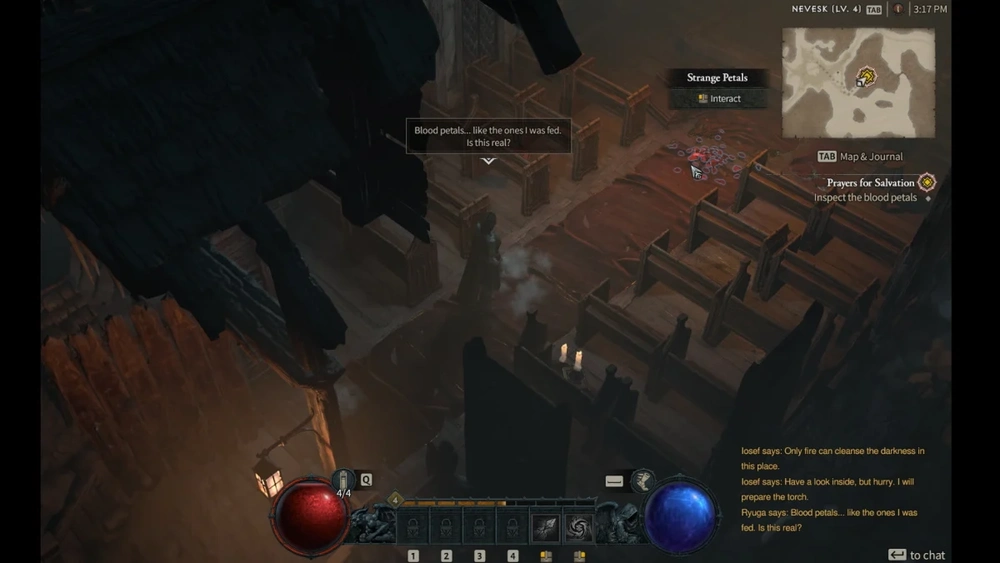
Prayers for Salvation
In this section of the Diablo 4 guide, we will explore Prayers for Salvation. This quest starts after you collect all four worldstone shards in the Fractured Peaks. You will need to return to Nevesk and talk to Vani.
- Head back to Nevesk and enter the tavern. Talk to Vani and tell her what you learned from Lilith and the worldstone shards. She will be shocked and scared by Lilith’s intentions and ask you to help her stop her.
- Vani will tell you that there is a monastery nearby where the Monks of Ivgorod worship and study. She will suggest that you go there and seek their guidance and assistance. She will also give you a new objective: travel to The Frozen Caverns.
In Search of Answers
This quest starts after you accept Vani’s suggestion to go to The Frozen Caverns. You will need to find and enter the monastery of the Monks of Ivgorod.
- Exit Nevesk and head east to The Frozen Caverns. You will encounter more enemies along the way, such as Frost Wraiths, Frost Wraith Alphas, Frost Wraith Shamans, Frost Wraith Runners, Frost Wraith Maulers, and Frost Wraith Brutes. Use your skills and dodge roll to fight them off.
- Enter The Frozen Caverns through the gate. This is another dungeon in Diablo 4. Dungeons are randomly generated areas that contain enemies, loot, puzzles, and bosses.
- Follow the linear path until you reach a large room with a frozen lake in the middle. You will see a bridge on the other side that leads to the monastery, but it is blocked by ice. You will need to find a way to melt the ice and cross the bridge.
- Explore the room and look for four levers that control four braziers around the lake. The levers are located in different parts of the room, guarded by enemies or hidden behind objects. Pull all four levers to light up all four braziers and melt the ice on the bridge.
- Cross the bridge and enter the monastery through the door.
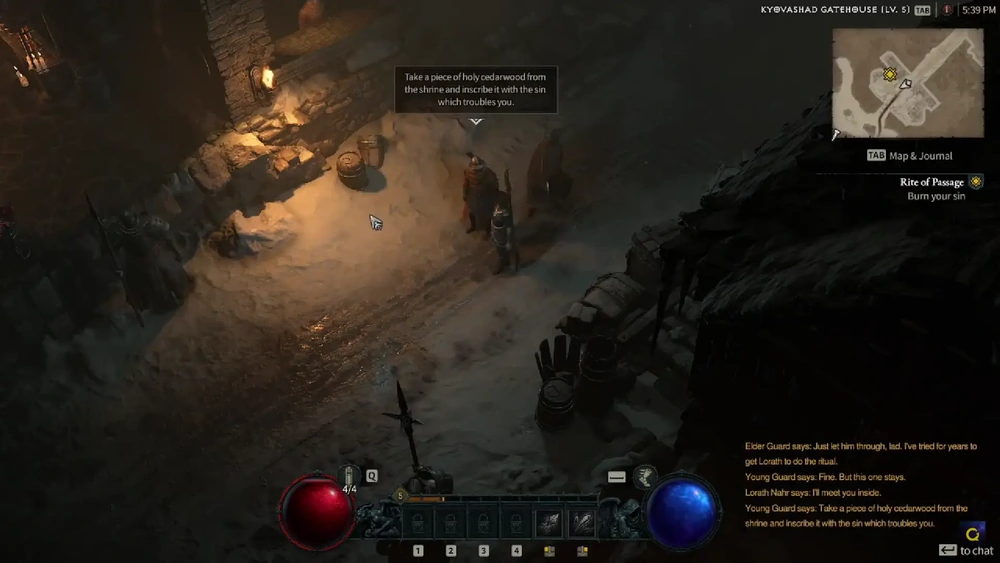
Rite of Passage
This is the part of the Diablo 4 guide where we will discuss Rite of Passage. This quest starts after you enter the monastery of the Monks of Ivgorod. You will need to find and talk to Lorath Nahr, a Horadrim scholar who is studying there.
- Follow the linear path until you reach a large hall with a statue of Tyrael in the middle. You will see Lorath Nahr standing near the statue, surrounded by books and scrolls. Talk to him and introduce yourself.
- Lorath Nahr will recognize you as the one from his visions and tell you that he has been waiting for you. He will explain that he is a Horadrim scholar who has been studying the worldstone shards and their connection to Lilith and the Pale Man, a mysterious figure who is behind the demonic invasion. He will also tell you that he has found a way to track down the Pale Man and stop him, but he needs your help.
- Lorath Nahr will ask you to bring him something from the town merchant, a rare ingredient that he needs for his ritual. He will give you a new objective: travel to Kyovashad.
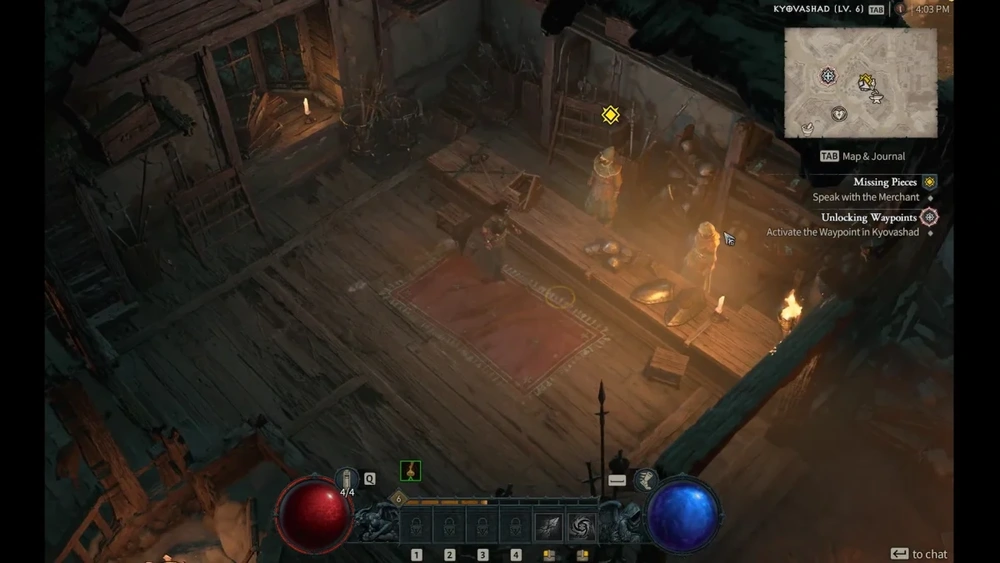
Missing Pieces
Missing Pieces will be the topic of this section of the Diablo 4 guide. This quest starts after you accept Lorath Nahr’s request to go to Kyovashad. You will need to find and buy a rare ingredient from the town merchant.
- Exit the monastery and head back to The Frozen Caverns. You will encounter more enemies along the way, such as Frost Wraiths, Frost Wraith Alphas, Frost Wraith Shamans, Frost Wraith Runners, Frost Wraith Maulers, and Frost Wraith Brutes. Use your skills and dodge roll to fight them off.
- Exit The Frozen Caverns through the gate and head west to Kyovashad. You will encounter more enemies along the way, such as Fallen Ones, Fallen Shamans, Fallen Hounds, Skeletons, Skeleton Archers, Skeleton Mages, Zombies, Ghouls, Wraiths, Bats, Spiders, Icehowls, Icehowl Alphas, Icehowl Shamans, Icehowl Runners, Icehowl Maulers, and Icehowl Brutes. Use your skills and dodge roll to fight them off.
- Enter Kyovashad through the gate and look for the town merchant, a man named Zoltan Kulle, who sells various items and services. He is located near the center of the town, next to a large tent. Talk to him and ask him for the rare ingredient that Lorath Nahr needs. He will tell you that he has it, but he won’t sell it unless you pay him a hefty price: 1000 gold pieces.
- Pay Zoltan Kulle 1000 gold pieces to buy the rare ingredient, a vial of blood magic essence. You can earn gold pieces by killing enemies, looting chests, selling items, or completing quests. If you don’t have enough gold pieces, you can come back later after earning more. Alternatively, you can try to persuade Zoltan Kulle to lower his price by using your charisma attribute or your class-specific skill. If you succeed, he will sell you the rare ingredient for 500 gold pieces instead. If you fail, he will raise his price to 1500 gold pieces instead.
- After buying the rare ingredient, head back to Lorath Nahr at the monastery.
Diablo 4 Guide: Act 1
We will cover Act 1 in this part of the Diablo 4 guide. Act 1 of Diablo 4 continues the story of Lilith and her plans for Sanctuary. You will travel to Scosglen, a forested region that is home to the Druids of Scosglen. You will encounter new allies and enemies, such as Dryads, Werewolves, Cultists, Rogues, and more. You will also discover more about the worldstone fragments that are scattered across Sanctuary and their connection to Lilith.
Act 1 consists of 12 quests that will take you through various locations in Scosglen, such as Dark Wood, The Black Bog, The Forgotten Tower, The Rogue Encampment, and The Monastery. Along the way, you will face new challenges and puzzles that will test your skills and knowledge.
A New Beginning
This part of the Diablo 4 guide focuses on A New Beginning. This quest starts after you complete Lorath Nahr’s ritual at the monastery of the Monks of Ivgorod. You will need to travel to Scosglen with Lorath Nahr and find out more about Lilith’s plans.
- After completing Lorath Nahr’s ritual, you will watch a cutscene where he uses blood magic essence and worldstone shards to create a portal to Scosglen. He will tell you that Scosglen is where Lilith’s cultists are gathering and where they are trying to resurrect an ancient evil: Duriel, the Lord of Pain. He will also tell you that Scosglen is where he saw the Pale Man in his visions and where he hopes to find him and stop him. He will ask you to join him in his quest and enter the portal with him.
- Enter the portal with Lorath Nahr. You will arrive in Dark Wood, a dense forest area in Scosglen. You will see Lorath Nahr standing near a waypoint marker. Talk to him and he will tell you that Dark Wood is infested with werewolves and other dangers. He will also tell you that he has detected another worldstone shard nearby and that you should collect it before Lilith’s cultists do. He will give you a new objective: find and collect the worldstone shard in Dark Wood.
Into Darkness
In this section of the Diablo 4 guide, we will explore Into Darkness. This quest starts after you accept Lorath Nahr’s objective to find and collect the worldstone shard in Dark Wood. You will need to use Lilith’s pendant to locate and retrieve the shard.
- Press Q to activate Lilith’s pendant. You will see a blue circle on your mini-map that indicates the direction and distance of the nearest worldstone shard. Follow the circle until you reach the shard’s location.
- Collect the worldstone shard by interacting with it. You will gain some worldstone power, a resource that you can use to enhance your skills, attributes, or items at Lilith’s altar. You will also trigger a cutscene where Lilith will speak to you telepathically and reveal more about her plans and motives.
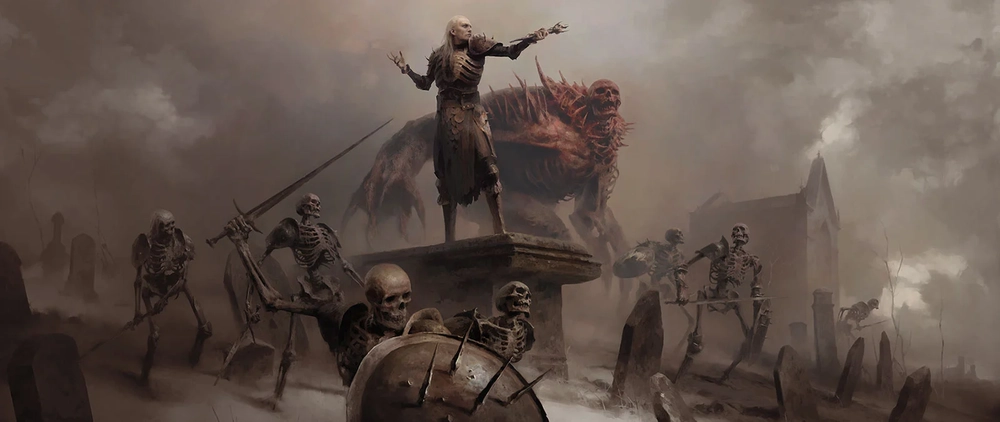
Ill Tidings
This quest starts after you collect the worldstone shard in Dark Wood. You will need to follow Lorath Nahr to The Black Bog and find out more about Lilith’s cultists.
- Follow Lorath Nahr as he leads you to The Black Bog, a swampy area in Scosglen. You will encounter more enemies along the way, such as Bog Wraiths, Bog Wraith Alphas, Bog Wraith Shamans, Bog Wraith Runners, Bog Wraith Maulers, and Bog Wraith Brutes. Use your skills and dodge roll to fight them off.
- Enter The Black Bog through the gate. This is another dungeon in Diablo 4. Dungeons are randomly generated areas that contain enemies, loot, puzzles, and bosses.
- Follow the linear path until you reach a large room with a wooden bridge in the middle. You will see a group of cultists performing a ritual on the other side of the bridge. They will notice you and attack you. Fight them off and cross the bridge.
- In the next room, you will find more cultists and a large cage with a prisoner inside. The prisoner is a Rogue named Vhenard, who was captured by the cultists and tortured for information. Talk to him and he will tell you that he is a member of the Rogue Encampment, a group of outcasts and rebels who oppose Lilith’s cultists. He will also tell you that the cultists are trying to resurrect Duriel, the Lord of Pain, by using worldstone shards and blood magic. He will ask you to free him and help him stop them.
- Free Vhenard by interacting with the cage. He will join you as a temporary ally and give you a new objective: find and destroy the blood magic altar.
Tarnished Luster
This is the part of the Diablo 4 guide where we will discuss Tarnished Luster. This quest starts after you free Vhenard from the cage in The Black Bog. You will need to find and destroy the blood magic altar that the cultists are using to resurrect Duriel.
- Follow Vhenard as he leads you to the blood magic altar, which is located in a deeper part of The Black Bog. You will encounter more enemies along the way, such as Cultists, Cultist Fanatics, Cultist Zealots, Cultist Mages, Cultist Summoners, and Cultist Champions. Use your skills and dodge roll to fight them off.
- Enter the blood magic altar room through the door. You will see a large stone altar with four worldstone shards embedded in it. You will also see four levers around the altar that control four braziers that fuel the blood magic ritual. You will need to pull all four levers to extinguish all four braziers and stop the ritual.
- Pull all four levers while fighting off more enemies that spawn around the room. Each lever will extinguish one brazier and weaken one worldstone shard. After pulling all four levers, all four braziers will be extinguished and all four worldstone shards will be shattered.
- Collect all four worldstone shards by interacting with them. You will gain more worldstone power and trigger a cutscene where Vhenard will thank you for your help and invite you to join him at the Rogue Encampment. He will also give you a new objective: travel to The Forgotten Tower.
The Knight and the Magpie
The Knight and the Magpie will be the topic of this section of the Diablo 4 guide. This quest starts after you accept Vhenard’s invitation to go to The Forgotten Tower. You will need to find and enter the tower where the Rogue Encampment is located.
- Exit The Black Bog through the gate. You will encounter more enemies along the way, such as Bog Wraiths, Bog Wraith Alphas, Bog Wraith Shamans, Bog Wraith Runners, Bog Wraith Maulers, and Bog Wraith Brutes. Use your skills and dodge roll to fight them off.
-
Enter The Forgotten Tower through the gate. This is another dungeon in Diablo 4. Dungeons are randomly generated areas that contain enemies, loot, puzzles, and bosses.
-
Follow the linear path until you reach a large room with a spiral staircase in the middle. You will see a group of Rogues guarding the entrance to the tower. They will recognize Vhenard as one of their own and let you pass. Talk to them and they will tell you that the Rogue Encampment is located at the top of the tower and that you should talk to their leader, Kira.
-
Climb the spiral staircase and enter the Rogue Encampment through the door. You will find yourself in a large hall with various NPCs and services. You can talk to them and use their services as you wish. Some of the NPCs and services you can find are:
- Kira: The leader of the Rogue Encampment and a former member of the Sisterhood of the Sightless Eye. She will tell you more about the Rogues and their history and goals. She will also give you a new objective: find and destroy Lilith’s Lament, a blood magic device that is corrupting Scosglen and empowering Lilith’s cultists.
- Zayl: A Necromancer who is studying the worldstone shards and their effects on Sanctuary. He will offer you his knowledge and assistance in exchange for your cooperation and worldstone power. He will also give you a side quest: Undertaking Below, where he asks you to explore the lower levels of The Forgotten Tower and find a hidden chamber with a powerful artifact.
- Darrick: A blacksmith who can repair, salvage, craft, or upgrade your items. He can also transmog your items to change their appearance.
- Lysa: A jeweler who can craft or unsocket gems for your items. She can also enchant your items with random bonuses or reroll existing ones.
- Nessa: A purveyor of curiosities who can sell you various items or gamble with you for a chance to get rare or legendary items.
- Waypoint: A device that allows you to fast travel between locations that you have visited before.
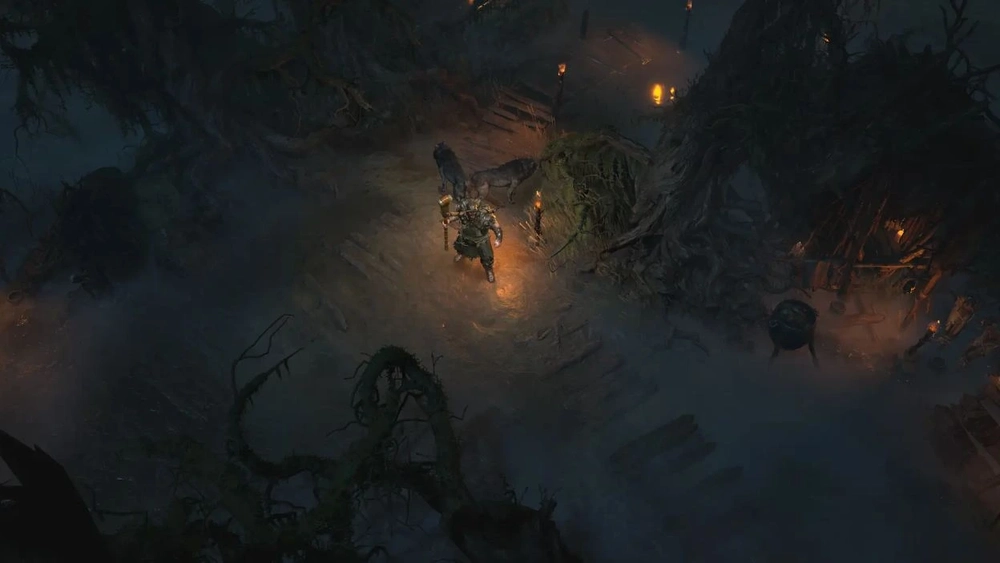
Undertaking Below
We will cover Undertaking Below in this part of the Diablo 4 guide. This quest starts after you talk to Zayl in The Rogue Encampment. You will need to explore the lower levels of The Forgotten Tower and find a hidden chamber with a powerful artifact.
- Exit The Rogue Encampment and head back down the spiral staircase. You will see a door on the left that leads to the lower levels of The Forgotten Tower. Enter the door and follow the linear path until you reach a large room with four doors around it. Each door leads to a different part of the dungeon. You can explore them in any order, but you will need to go through all of them eventually.
- The door on the north leads to a long corridor with some enemies and a puzzle at the end. The puzzle involves matching four symbols on the wall with four symbols on the floor by stepping on them in the correct order. The solution is shown below:
- After solving the puzzle, a secret door will open behind it, revealing a hidden room with a treasure chest and a lore book called “The Sin War”. Loot them both, then head back to the large room.
- The door on the east leads to a small room with some enemies and a lever on the wall. Pulling the lever will open a gate on the south side of the large room, allowing you access to a new area. Head back to the large room and go through the gate.
- In the new area, you will find another large hall with more enemies and two doors: one on the left and one on the right. The door on the left leads to a dead end with some loot, while the door on the right leads to another puzzle at the end of a corridor. The puzzle involves rotating four tiles with symbols on them until they form a complete circle. The solution is shown below:
- After solving the puzzle, another secret door will open behind it, revealing another hidden room with a treasure chest and a lore book called “The Black Road”. Loot them both, then head back to the large hall.
- The door on the south leads to a small room with some enemies and another lever on the wall. Pulling the lever will open another gate on the west side of the large room, allowing you access to another new area. Head back to the large room and go through the gate.
- In the new area, you will find another large hall with more enemies and two doors: one on the left and one on the right. The door on the left leads to another dead end with some loot, while the door on the right leads to another puzzle at the end of a corridor. The puzzle involves pressing four buttons in a certain order until they light up green. The solution is shown below:
- After solving the puzzle, another secret door will open behind it, revealing another hidden room with a treasure chest and a lore book called “The Veiled Prophet”. Loot them both, then head back to the large hall.
- The door on the west leads to the hidden chamber that Zayl was looking for. You will see a large stone sarcophagus with a glowing orb on top of it. This is the artifact that Zayl was seeking: the Eye of Anu, a powerful relic that contains the essence of Anu, the first being in existence. Zayl will explain that the Eye of Anu can reveal the secrets of creation and destruction, and that he wants to study it and use it for good. He will ask you to help him open the sarcophagus and retrieve the Eye of Anu.
- Help Zayl open the sarcophagus by interacting with it. You will trigger a cutscene where Zayl will use his blood magic to break the seal and lift the lid. However, as soon as he does, a blast of energy will knock him back and awaken the guardian of the Eye of Anu: Tal Rasha, the Immortal King. Tal Rasha is an ancient Horadrim mage who sacrificed himself to contain Baal, the Lord of Destruction, inside his body. He is now corrupted by Baal’s influence and seeks to destroy anyone who tries to take the Eye of Anu. He will attack you and Zayl as the final boss of this quest.
Also read: Is Diablo 4 Appropriate for Kids?
In Her Wake
This part of the Diablo 4 guide focuses on In Her Wake. This quest starts after you defeat Tal Rasha, the Immortal King, in The Forgotten Tower. You will need to return to Kira in The Rogue Encampment and tell her what you learned from Zayl.
- Exit The Forgotten Tower through the gate. You will encounter more enemies along the way, such as Bog Wraiths, Bog Wraith Alphas, Bog Wraith Shamans, Bog Wraith Runners, Bog Wraith Maulers, and Bog Wraith Brutes. Use your skills and dodge roll to fight them off.
- Enter The Rogue Encampment through the door and head back to Kira. Talk to her and tell her what you learned from Zayl and the Eye of Anu. She will be impressed by your discovery and tell you that the Eye of Anu could be the key to stopping Lilith and Duriel. She will also tell you that she has a plan to infiltrate Lilith’s Lament and destroy it from within. She will ask you to join her and give you a new objective: travel to The Monastery.
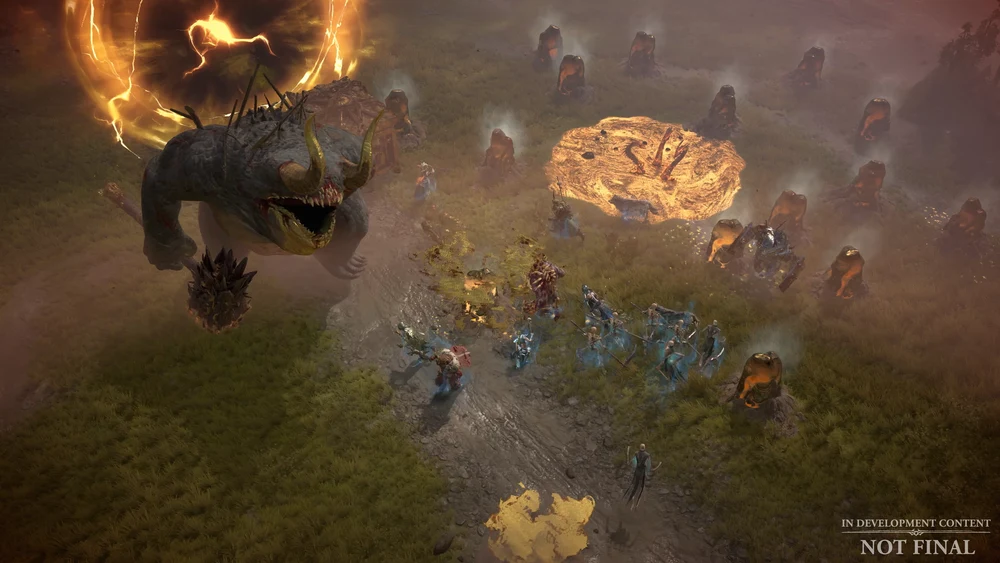
Storming the Gates
In this section of the Diablo 4 guide, we will explore Storming the Gates. This quest starts after you accept Kira’s plan to go to The Monastery. You will need to find and enter the monastery where Lilith’s Lament is located.
- Exit The Rogue Encampment and head back down the spiral staircase. You will see a door on the right that leads to The Monastery. Enter the door and follow the linear path until you reach a large room with a wooden bridge in the middle. You will see a group of cultists guarding the entrance to the monastery. They will notice you and attack you. Fight them off and cross the bridge.
- In the next room, you will find more cultists and a large gate that blocks your way to the monastery. You will need to find a way to open the gate and enter the monastery.
- Explore the room and look for four levers that control four chains that hold the gate in place. The levers are located in different parts of the room, guarded by enemies or hidden behind objects. Pull all four levers to release all four chains and open the gate.
- Enter the monastery through the gate. This is another dungeon in Diablo 4. Dungeons are randomly generated areas that contain enemies, loot, puzzles, and bosses.
- Follow the linear path until you reach a large room with a statue of Lilith in the middle. You will see Kira and a group of Rogues fighting against a group of cultists and a large demon. The demon is Lilith’s Lament, a blood magic device that is corrupting Scosglen and empowering Lilith’s cultists. It will notice you and attack you as the final boss of this quest.
The Cost of Knowledge
This is the part of the Diablo 4 guide where we will discuss The Cost of Knowledge. This quest starts after you defeat Lilith’s Lament in The Monastery. You will need to return to Zayl in The Rogue Encampment and tell him what you learned from the Eye of Anu.
- Exit The Monastery through the gate. You will encounter more enemies along the way, such as Cultists, Cultist Fanatics, Cultist Zealots, Cultist Mages, Cultist Summoners, and Cultist Champions. Use your skills and dodge roll to fight them off.
- Enter The Rogue Encampment through the door and head back to Zayl. Talk to him and tell him what you learned from the Eye of Anu. He will be intrigued by your discovery and tell you that the Eye of Anu could reveal the secrets of creation and destruction, and that he wants to study it and use it for good. He will also tell you that he has a plan to infiltrate Lilith’s stronghold and destroy her from within. He will ask you to join him and give you a new objective: travel to The Pale Man’s Lair.
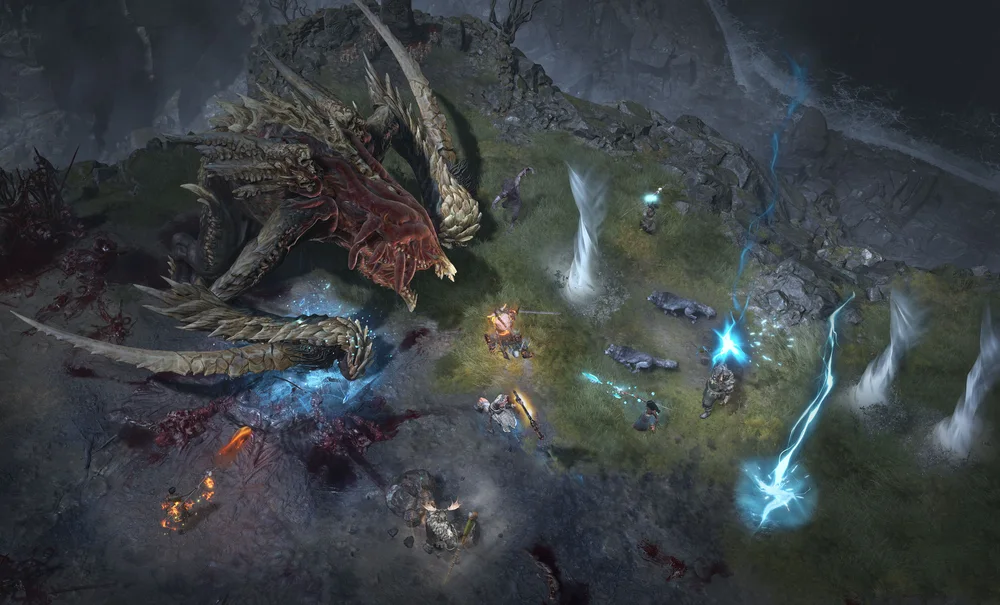
Light’s Guidance
Light’s Guidance will be the topic of this section of the Diablo 4 guide. This quest starts after you accept Zayl’s plan to go to The Pale Man’s Lair. You will need to find and enter the lair where Lilith and the Pale Man are hiding.
- Exit The Rogue Encampment and head back down the spiral staircase. You will see a door on the left that leads to The Pale Man’s Lair. Enter the door and follow the linear path until you reach a large room with a portal in the middle. You will see Zayl standing near the portal, surrounded by books and scrolls. Talk to him and he will tell you that he has used blood magic and worldstone shards to create a portal to The Pale Man’s Lair. He will also tell you that The Pale Man’s Lair is located in Hell, the realm of demons and evil. He will warn you that Hell is full of dangers and horrors, and that you should be prepared for anything. He will ask you to enter the portal with him.
- Enter the portal with Zayl. You will arrive in Hell, a dark and fiery place full of demons and torments. You will see Zayl standing near a waypoint marker. Talk to him and he will tell you that Hell is divided into nine circles, each ruled by one of the Prime Evils or Lesser Evils, the lords of Hell. He will also tell you that The Pale Man’s Lair is located in the ninth circle, where Diablo, the Lord of Terror, resides. He will give you a new objective: find and enter The Pale Man’s Lair in Hell.
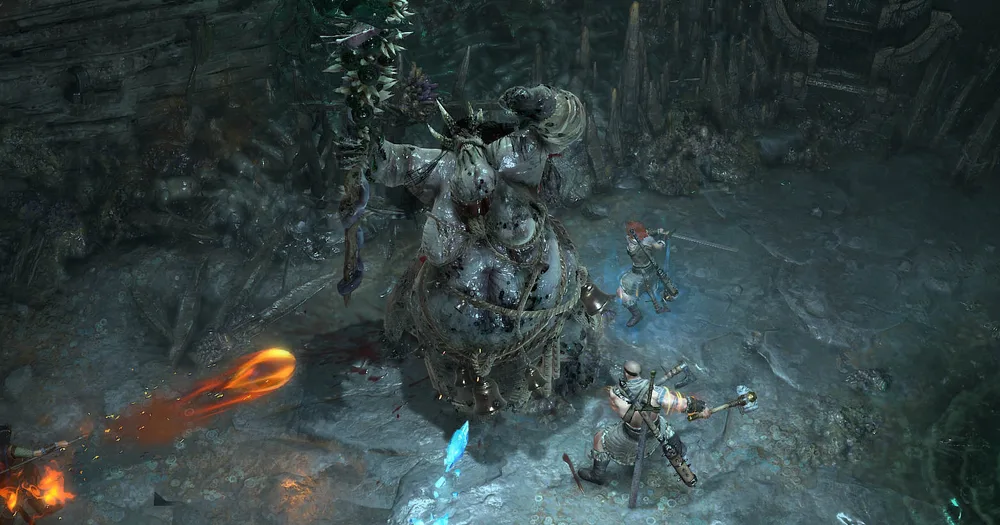
Kor Valar Pilgrimage
We will cover Kor Valar Pilgrimage in this part of the Diablo 4 guide. This quest starts after you accept Zayl’s objective to find and enter The Pale Man’s Lair in Hell. You will need to use Lilith’s pendant to locate and retrieve worldstone shards in Hell.
- Press Q to activate Lilith’s pendant. You will see a blue circle on your mini-map that indicates the direction and distance of the nearest worldstone shard. Follow the circle until you reach the shard’s location.
- Collect the worldstone shard by interacting with it. You will gain some worldstone power, a resource that you can use to enhance your skills, attributes, or items at Lilith’s altar. You will also trigger a cutscene where Lilith will speak to you telepathically and reveal more about her plans and motives.
-
Repeat the process until you collect all four worldstone shards in Hell. You can find them in the following locations:
- In the first circle of Hell, where Andariel, the Maiden of Anguish, resides. You will need to fight your way through hordes of demons and cultists until you reach a large room with a pool of blood in the middle. The worldstone shard is located at the bottom of the pool, guarded by Andariel herself.
- In the second circle of Hell, where Duriel, the Lord of Pain, resides. You will need to navigate through a maze of ice and fire until you reach a large room with a frozen lake in the middle. The worldstone shard is located on an island in the center of the lake, guarded by Duriel himself.
- In the third circle of Hell, where Azmodan, the Lord of Sin, resides. You will need to solve a series of puzzles and traps until you reach a large room with a giant wheel in the middle. The worldstone shard is located on one of the spokes of the wheel, guarded by Azmodan himself.
- In the fourth circle of Hell, where Belial, the Lord of Lies, resides. You will need to overcome a series of illusions and deceptions until you reach a large room with a mirror in the middle. The worldstone shard is located behind the mirror, guarded by Belial himself.
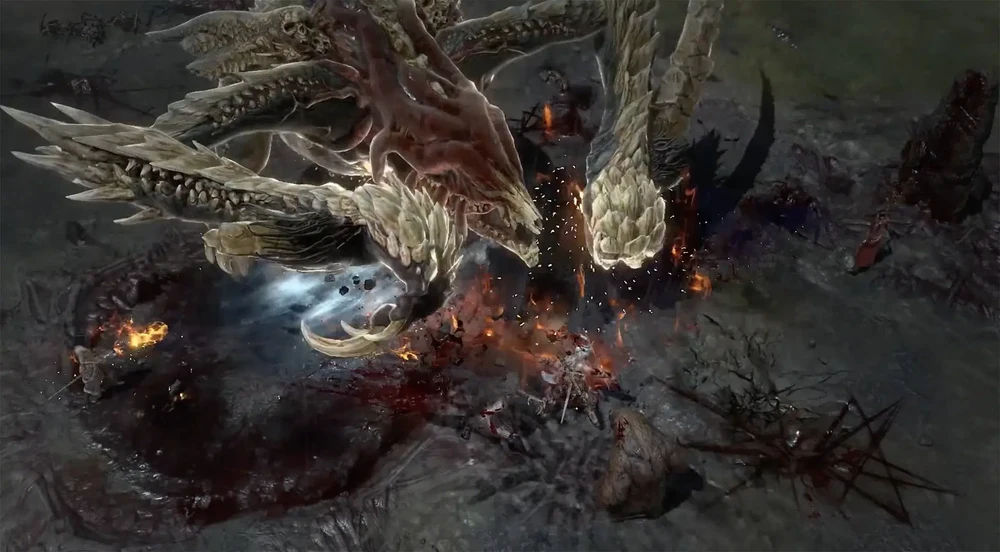
Light’s Judgement
This part of the Diablo 4 guide focuses on Light’s Judgement. This quest starts after you collect all four worldstone shards in Hell. You will need to follow Zayl to The Pale Man’s Lair and confront him and Lilith.
- Follow Zayl as he leads you to The Pale Man’s Lair, which is located in the ninth circle of Hell, where Diablo, the Lord of Terror, resides. You will encounter more enemies along the way, such as Demons, Demon Imps, Demon Brutes, Demon Mages, Demon Summoners, and Demon Champions. Use your skills and dodge roll to fight them off.
- Enter The Pale Man’s Lair throughthe gate. You will encounter more enemies along the way, such as Demons, Demon Imps, Demon Brutes, Demon Mages, Demon Summoners, and Demon Champions. Use your skills and dodge roll to fight them off.
- Enter The Pale Man’s Lair through the gate. This is another dungeon in Diablo 4. Dungeons are randomly generated areas that contain enemies, loot, puzzles, and bosses.
- Follow the linear path until you reach a large room with a throne in the middle. You will see Lilith and the Pale Man sitting on the throne, surrounded by cultists and demons. They will notice you and Zayl and mock you for your futile attempt to stop them. They will reveal that they have been using the worldstone shards to corrupt Sanctuary and unleash Hell on Earth. They will also reveal that they have a secret weapon that will ensure their victory: the Black Soulstone, a powerful artifact that contains the souls of all the Prime Evils and Lesser Evils, the lords of Hell. They will activate the Black Soulstone and summon Diablo, the Lord of Terror, to fight you as the final boss of this quest.
Diablo 4 Guide: Side Quests
This part of the Diablo 4 guide will cover Side Quests. Side Quests are optional missions that you can find and complete in Diablo 4. They offer different rewards, such as experience, gold, items, or renown. Renown is a currency that can be used to unlock special vendors, services, or features in each region. Side quests can be acquired by talking to NPCs, finding items, or triggering events. They are marked by a blue exclamation mark on the map and on the NPC’s head.
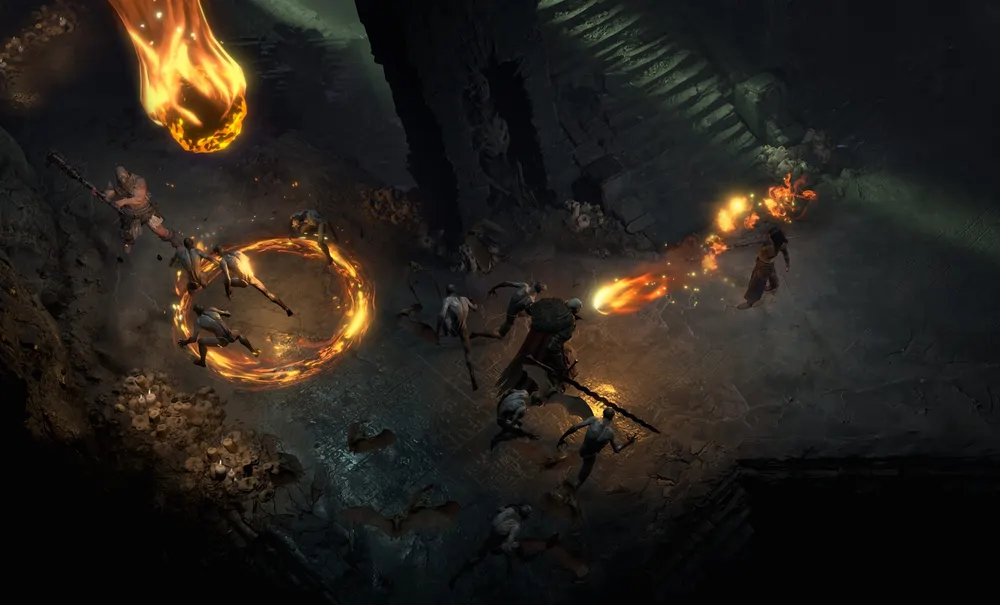
In this section, we will list and explain all the side quests that you can find and complete in Diablo 4. We will include their locations, rewards, and requirements. We will also provide tips and strategies for completing them. The side quests are divided by regions and sub-regions.
Diablo 4 Guide: Fractured Peaks
TBT
Diablo 4 Guide: Collectibles
This is the section of the Diablo 4 guide where we will talk about Collectibles. One of the aspects that will make Diablo 4 more engaging and rewarding is the presence of collectibles. Collectibles are items that can be found and collected throughout the game world, and they can provide various benefits, such as lore, customization, achievements, and bonuses. Collectibles can also be displayed in the player’s camp, which is a personal hub where they can rest, craft, trade, and interact with other players.
Types of Collectibles
There are four main types of collectibles in Diablo 4: lore books, relics, mounts, and cosmetics.
Lore Books
Lore books are items that contain stories and information about the world of Sanctuary and its inhabitants. They can be found in various places, such as dungeons, towns, campsites, libraries, tombs, and more. Lore books can be read by opening the inventory and selecting them. Reading lore books can unlock achievements and provide insight into the game’s lore and history.
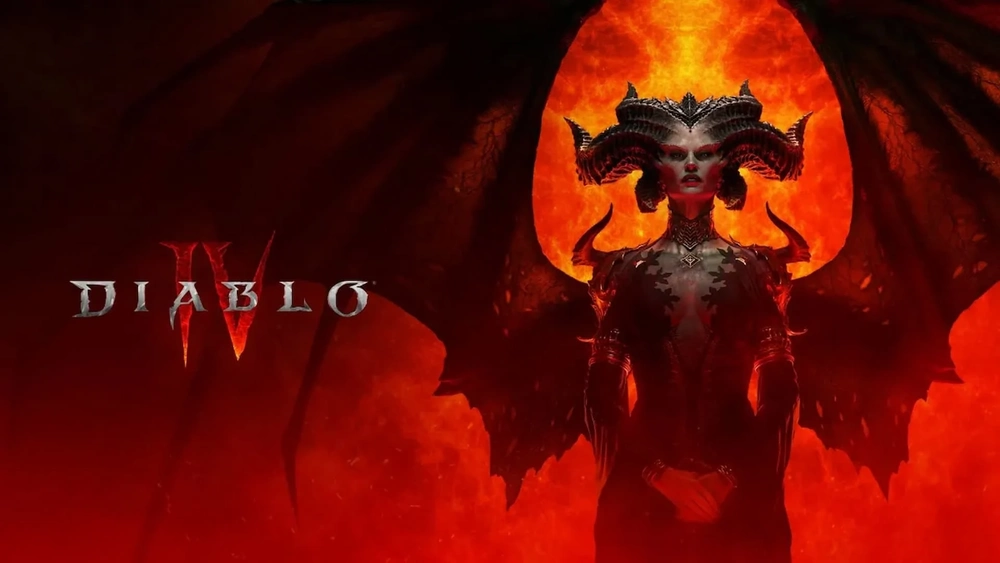
Some examples of lore books are:
- The Book of Cain: A tome written by Deckard Cain, the last of the Horadrim. It contains his knowledge and research on the origins of Sanctuary, the Eternal Conflict between angels and demons, the Prime Evils and their Lesser Evils, the Worldstone and its destruction, and more.
- The Book of Tyrael: A tome written by Tyrael, the former Archangel of Justice who became a mortal. It contains his personal thoughts and reflections on his role in the events of Diablo 3, his relationship with humanity, his views on Heaven and Hell, and more.
- The Book of Lilith: A tome written by Lilith, the daughter of Mephisto and the Queen of Succubi. It contains her secrets and plans for Sanctuary, her role in creating the Nephalem (the first humans), her rebellion against her father and Inarius (her lover), her banishment to the Void by the Angiris Council (the rulers of Heaven), and more.
- The Book of Rathma: A tome written by Rathma, the son of Lilith and Inarius and the founder of the Priests of Rathma (the Necromancers). It contains his teachings and philosophy on balance between life and death, his opposition to both Heaven and Hell, his guidance for his followers, and more.
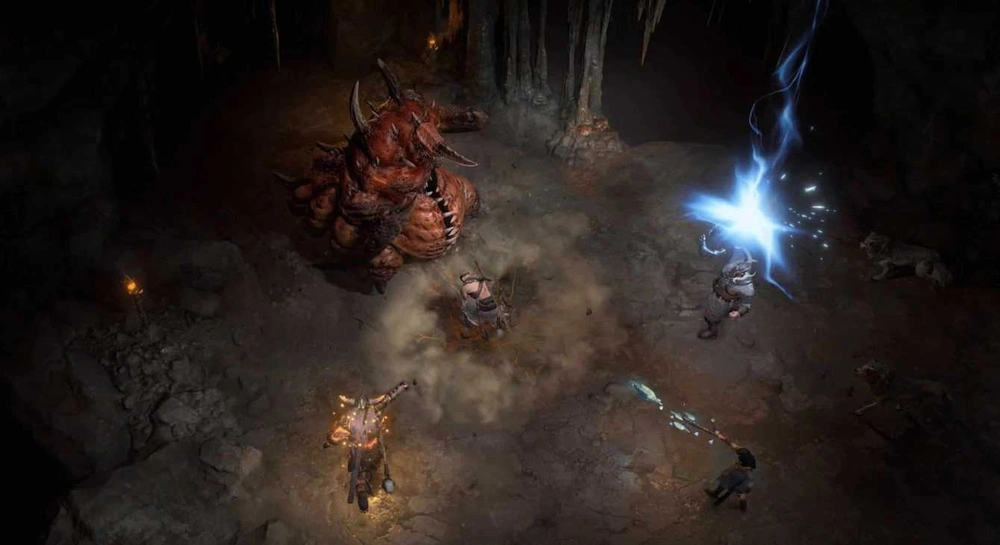
Relics
Relics are items that have special powers or properties. They can be found in various places, such as chests, corpses, shrines, altars, and more. Relics can be equipped by opening the inventory and selecting them. Equipping relics can provide various benefits, such as stat boosts, skill enhancements, buffs, debuffs, and more.
Some examples of relics are:
- The Eye of Anu: A relic that contains a fragment of Anu, the first being who existed before creation. It grants increased vision range and reveals hidden enemies and traps.
- The Heart of Fiacla-Géar: A relic that contains a fragment of Fiacla-Géar, the dragon who forged the Worldstone with his breath. It grants increased fire damage and resistance and allows breathing fire as a skill.
- The Horn of Talic: A relic that contains a fragment of Talic, one of the Ancients who guard Mount Arreat. It grants increased strength and vitality and allows summoning an Ancient as a skill.
- The Soulstone of Baal: A relic that contains a fragment of Baal, the Lord of Destruction who corrupted the Worldstone and caused its shattering. It grants increased chaos damage and resistance and allows spreading corruption as a skill.
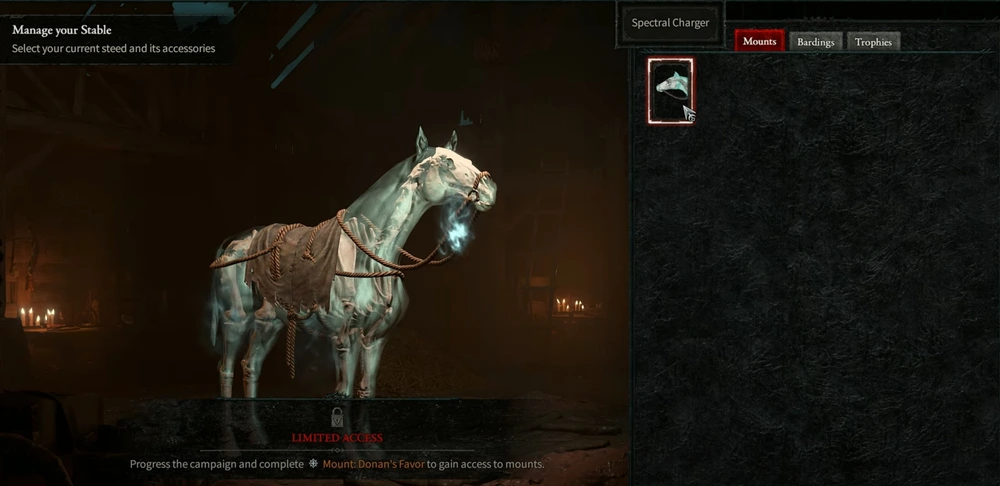
Mounts
Mounts are creatures that can be ridden by players to travel faster across the game world. They can be found in various places, such as stables, wilderness, caves, and more. Mounts can be summoned by opening the inventory and selecting them. Riding mounts can provide various benefits, such as speed boost, jumping over obstacles, trampling enemies, and more.
Some examples of mounts are:
- Horse: A common mount that can be found in many places. It has moderate speed and endurance and can jump over small obstacles.
- Camel: A rare mount that can be found in desert areas. It has high speed and endurance and can withstand harsh weather conditions.
- Wolf: A rare mount that can be found in forest areas. It has high speed and agility and can track enemies and prey.
- Wyvern: A legendary mount that can be found in mountain areas. It has very high speed and flight ability and can breathe fire or ice.
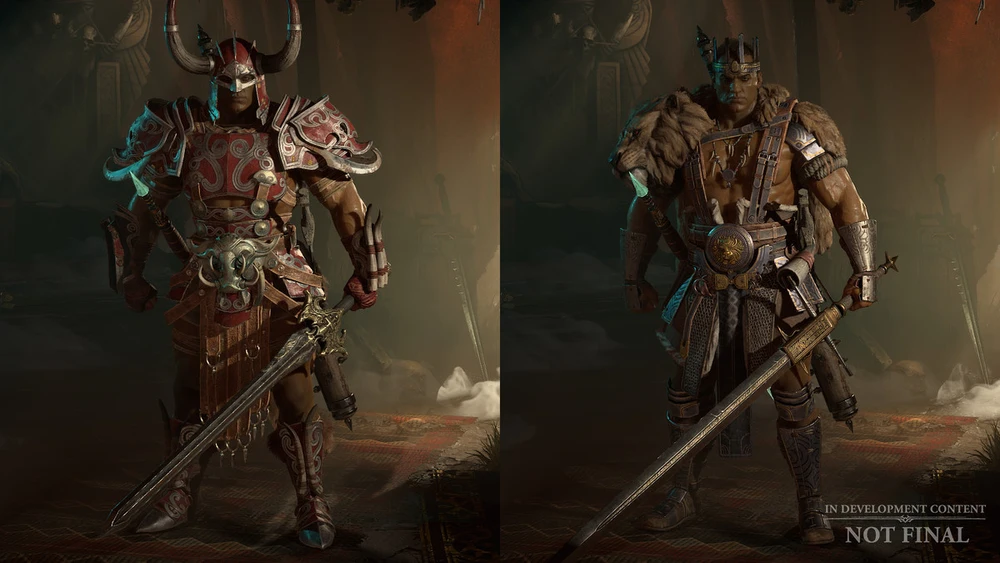
Cosmetics
Cosmetics are items that can change the appearance or style of players or their equipment. They can be found in various places, such as shops, quests, events, and more. Cosmetics can be applied by opening the inventory and selecting them. Applying cosmetics can provide various benefits, such as customization, prestige, fun, and more.
Some examples of cosmetics are:
- Armor Sets: Cosmetics that can change the appearance or style of players’ armor. They can be based on different themes, such as class-specific, faction-specific, historical, fantasy, or sci-fi.
- Weapon Skins: Cosmetics that can change the appearance or style of players’ weapons. They can be based on different themes, such as class-specific, faction-specific, historical, fantasy, or sci-fi.
- Wings: Cosmetics that can add wings to players’ backs. They can be based on different themes, such as angelic, demonic, elemental, or mechanical.
- Pets: Cosmetics that can add pets to players’ sides. They can be based on different creatures, such as animals, monsters, demons, or robots.
Locations of Collectibles
We will discuss Locations of Collectibles in this portion of the Diablo 4 guide. Collectibles can be found in various locations throughout the game world. Some locations are fixed, while others are random or dynamic. Some locations are easy to access, while others are hidden or guarded. Some locations are available at any time, while others are only available during certain times or conditions.
Here are some examples of locations where collectibles can be found:
- Dungeons: Dungeons are underground or enclosed areas where players can explore and fight enemies. Dungeons often contain chests or corpses that may hold relics or lore books. Dungeons may also have secret passages or hidden rooms that may hold rare or legendary collectibles. Dungeons may have different themes or difficulties depending on their location or level.
- Towns: Towns are populated areas where players can rest and interact with NPCs (non-player characters). Towns often contain shops or vendors that may sell cosmetics or mounts. Towns may also have libraries or archives that may hold lore books. Towns may have different cultures or histories depending on their location or faction.
- Wilderness: Wilderness are open areas where players can roam freely and encounter enemies or events. Wilderness often contain stables or nests that may hold mounts. Wilderness may also have shrines or altars that may hold relics. Wilderness may have different environments or climates depending on their location or season.
- Campsites: Campsites are personal hubs where players can customize their campfire and display their collectibles. Campsites often contain trophies or banners that may hold cosmetics. Campsites may also have journals or letters that may hold lore books. Campsites may have different layouts or decorations depending on their location or preference.
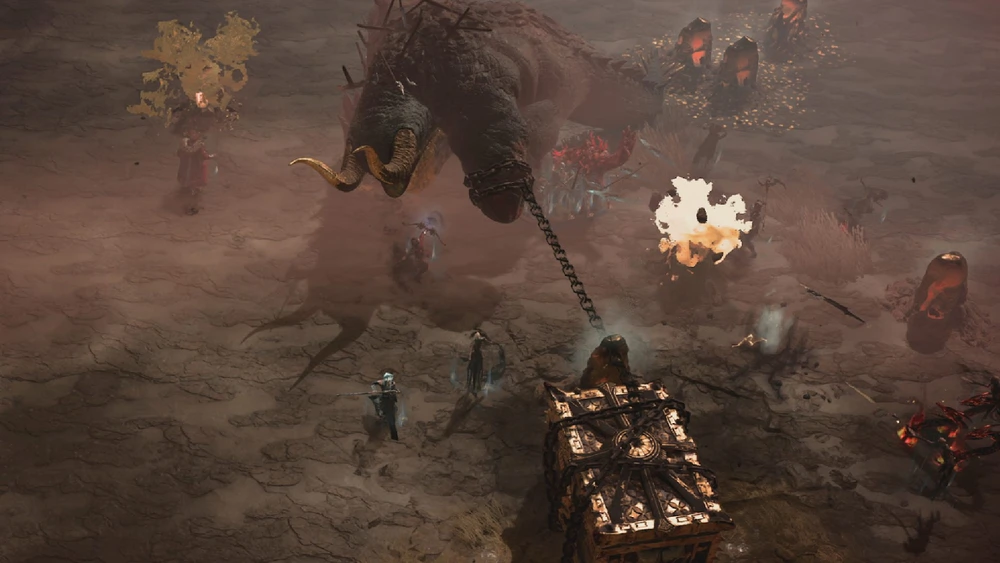
Effects of Collectibles
This part of the Diablo 4 guide will cover Effects of Collectibles. Collectibles can have various effects on players or their gameplay experience. Some effects are passive or permanent while others are active or temporary.Some effects are beneficial while others are detrimental.Some effects are visible while others are invisible.
Here are some examples of effects that collectibles can have:
- Lore Books: Lore books have no direct effect on gameplay but they provide insight into the game’s lore and history. They also unlock achievements which may grant rewards such as cosmetics or relics. Lore books also add flavor and immersion to the game world. They also show players’ interest and curiosity about the game’s story and characters.
- Relics: Relics have direct effects on gameplay as they enhance players’ stats, such as strength, intelligence, vitality, dexterity and more. Relics also enhance players’ skills, such as damage, resistance, duration, radius, and more. Relics also grant players’ buffs, such as increased damage, resistance, speed, or health. Relics also grant players’ debuffs, such as reduced damage, resistance, speed, or health. Relics also have drawbacks, such as limited durability, cooldown, or side effects.
- Mounts: Mounts have direct effects on gameplay as they allow players to travel faster across the game world. They also have passive effects, such as increased carrying capacity, stamina, or defense. They also have active effects, such as jumping over obstacles, trampling enemies, or using special skills. Mounts also have drawbacks, such as limited stamina, health, or control.
- Cosmetics: Cosmetics have no direct effect on gameplay but they provide customization and personalization for players and their equipment. They also unlock achievements which may grant rewards such as relics or lore books. Cosmetics also add flavor and fun to the game world. They also show players’ style and preference for the game’s aesthetics and themes.
Diablo 4 Guide: Endgame Content
Endgame Content will be the topic of this section of the Diablo 4 guide. What happens after you finish the main campaign of Diablo 4? What can you do to keep playing and enjoying the game? How can you challenge yourself and improve your character? How can you compete with other players and show off your achievements?
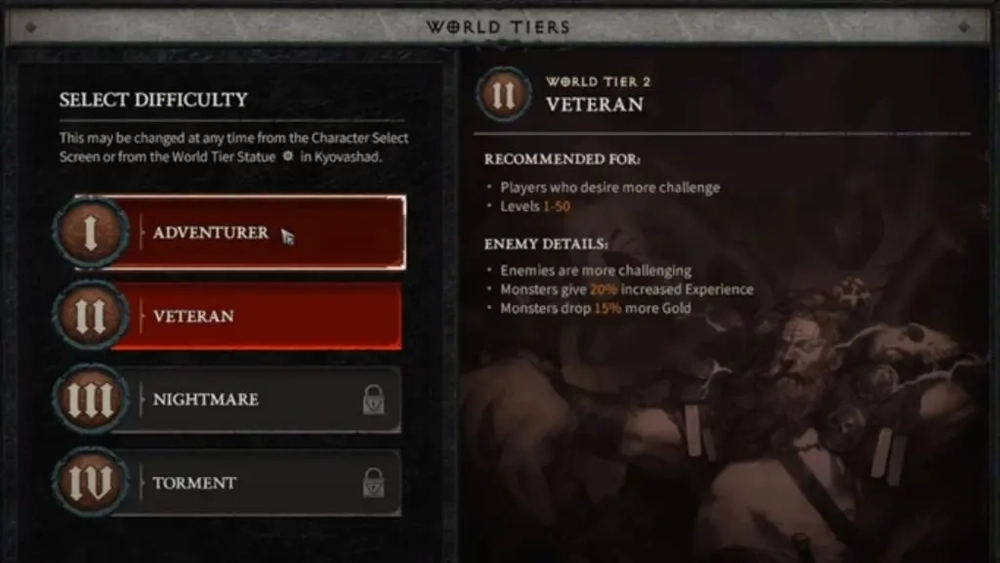
Diablo 4 Guide: World Tiers
One of the first things you can do after finishing the main campaign of Diablo 4 is to unlock the World Tiers. World Tiers are levels of difficulty that affect the entire game world. They increase the level and power of enemies, but also grant access to better loot and other advantages. There are five World Tiers in total, each with its own name and icon.
To unlock the first World Tier, you need to complete a special “capstone dungeon” that becomes available after completing the campaign. This dungeon will test your skills and gear against a tough boss and a horde of enemies. Once you complete it, you will unlock the first World Tier and be able to change it at any time from the menu or at a World Tier Statue in a town.
The higher the World Tier, the harder the game becomes, but also the more rewarding. You will find more gold, experience, legendary items, crafting materials, and other resources. You will also unlock new features and activities, such as Nightmare Dungeons, Helltides, PvP zones, and more.
Here are the names and icons of the five World Tiers:
- Normal: The default difficulty level. Enemies are at their base level and power. No special features or activities are available.
- Hard: The first unlocked difficulty level. Enemies are slightly higher level and power. Nightmare Dungeons become available.
- Expert: The second unlocked difficulty level. Enemies are moderately higher level and power. Helltides become available.
- Master: The third unlocked difficulty level. Enemies are significantly higher level and power. PvP zones become available.
- Nightmare: The fourth and final unlocked difficulty level. Enemies are extremely higher level and power. All features and activities are available.
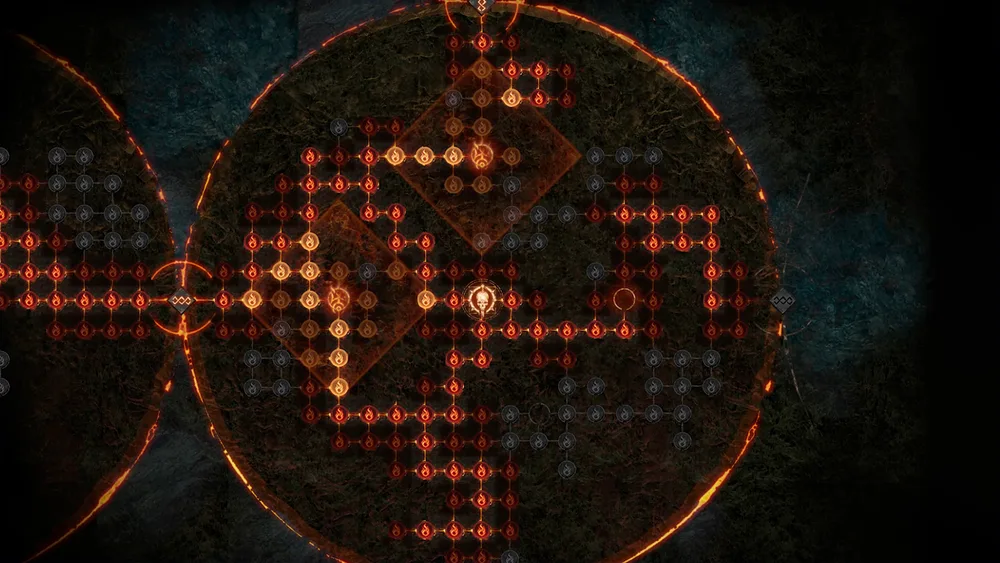
Diablo 4 Guide: Paragon System
In this Diablo 4 guide section, we will explore Paragon System. Another thing you can do after finishing the main campaign of Diablo 4 is to customize your character using the Paragon System. The Paragon System is a way of enhancing your character beyond the base skill tree. It allows you to choose from different options that affect your stats, skills, abilities, and appearance.
The Paragon System consists of two parts: the Paragon Board and the Codex of Power.
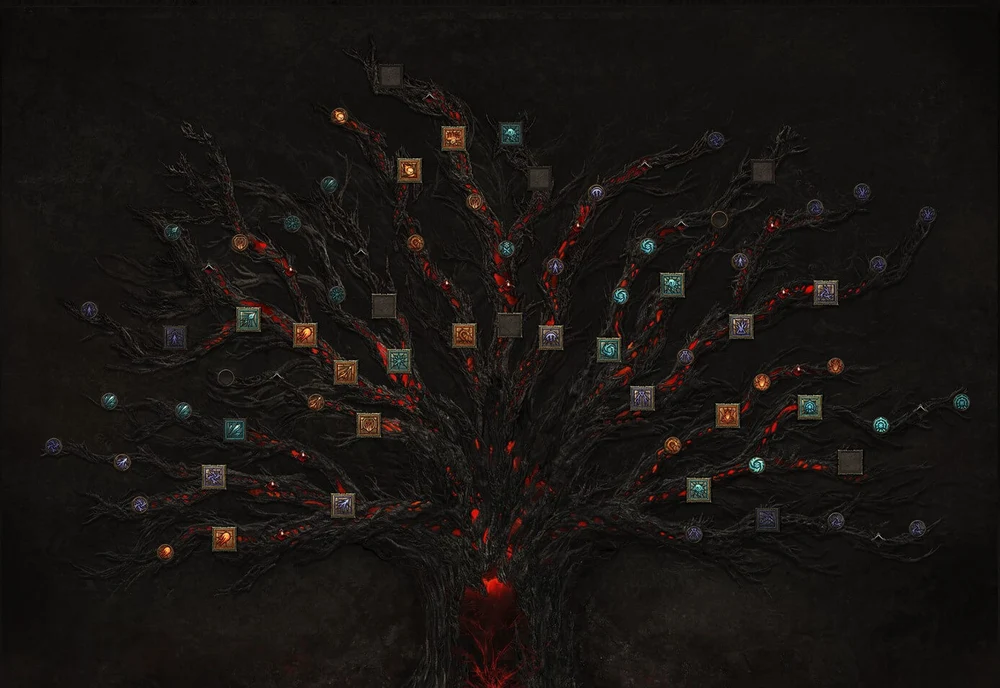
Paragon Board
The Paragon Board is a circular grid that contains various nodes that grant bonuses to your character. Each node has a name, an icon, a description, and a cost in Paragon Points. Paragon Points are earned by gaining experience after reaching the level cap.
The Paragon Board can be rotated to align different nodes with different slots on your character sheet. Each slot corresponds to a different aspect of your character: Offense, Defense, Utility, and Style. By rotating the Paragon Board, you can customize your character according to your preference and playstyle.
For example, if you want to focus on offense, you can rotate the Paragon Board to align nodes that increase your damage, critical chance, attack speed, or elemental damage with your offense slot. If you want to focus on defense, you can rotate the Paragon Board to align nodes that increase your health, armor, resistance, or life regeneration with your defense slot. If you want to focus on utility, you can rotate the Paragon Board to align nodes that increase your movement speed, resource regeneration, cooldown reduction, or item find with your utility slot. If you want to focus on style, you can rotate the Paragon Board to align nodes that change your appearance, such as hair color, eye color, skin tone, or tattoos with your style slot.
The Paragon Board offers a lot of depth and customization for your character. You can experiment with different combinations and find the best one for you.
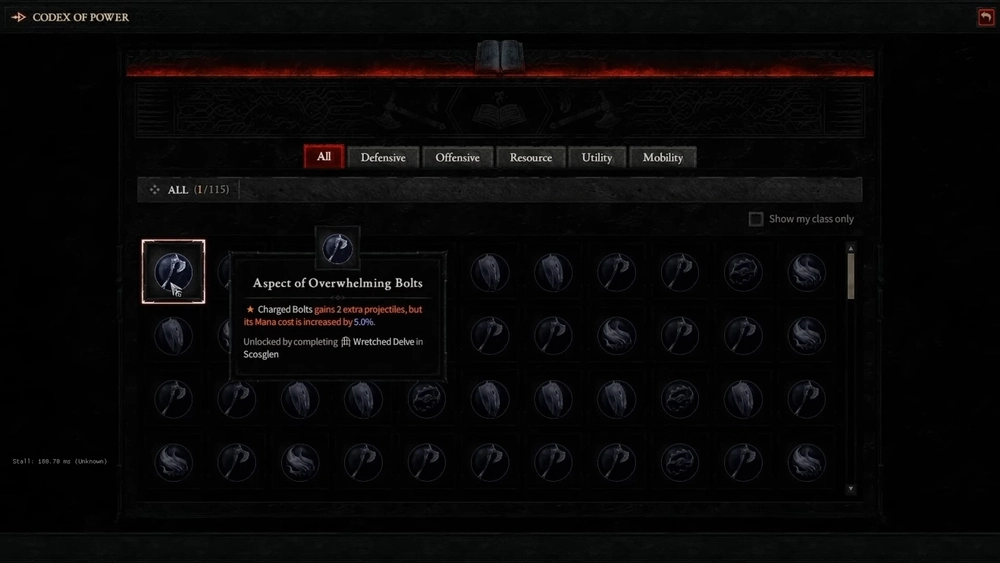
Codex of Power
The Codex of Power is a book that contains various Aspects that grant bonuses to your character. Each Aspect has a name, an icon, a description, and a cost in Aspect Points. Aspect Points are earned by completing dungeons after reaching the level cap.
The Codex of Power can be opened by pressing a button on your character sheet. You can equip up to two Aspects at a time: one for your primary hand and one for your secondary hand. Each Aspect affects a different aspect of your character: Skills, Items, or Traits.
For example, if you equip an Aspect that affects Skills, you can enhance one of your skills by adding an additional effect, such as increased damage, duration, radius, or number of targets. If you equip an Aspect that affects Items, you can enhance one of your items by adding an additional property, such as increased stats, affixes, sockets, or rarity. If you equip an Aspect that affects Traits, you can enhance one of your traits by adding an additional bonus, such as increased health globe drop rate, gold find rate, experience gain rate, or paragon point gain rate.
The Codex of Power offers a lot of variety and customization for your character. You can experiment with different Aspects and find the best one for you.
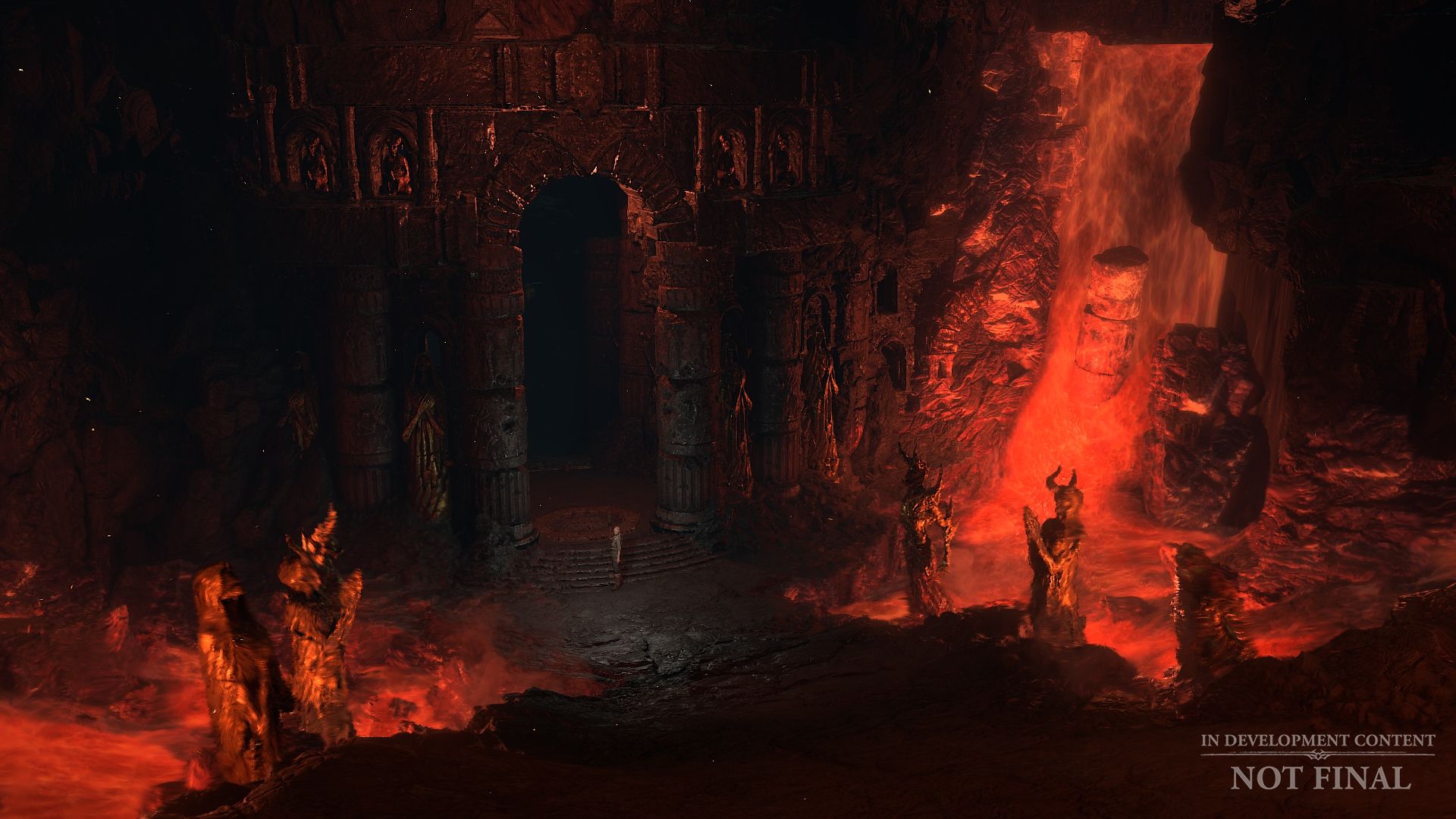
Diablo 4 Guide: Nightmare Dungeons
This is the section of the Diablo 4 guide where we will talk about Nightmare Dungeons. One of the activities you can do after finishing the main campaign of Diablo 4 is to explore Nightmare Dungeons. Nightmare Dungeons are challenging variants of regular dungeons that offer greater rewards but also greater risks.
To access Nightmare Dungeons, you need to collect Nightmare Sigils. Nightmare Sigils are items that drop from enemies or chests in dungeons after unlocking the first World Tier. Each Nightmare Sigil has a name, an icon, a description, and a level. The level determines how difficult the Nightmare Dungeon will be.
To use a Nightmare Sigil, you need to go to a dungeon entrance and activate it. This will open a portal to a Nightmare Dungeon based on the dungeon type and location. For example, if you use a Nightmare Sigil at the entrance of a crypt dungeon in Kehjistan, you will enter a Nightmare Crypt Dungeon in Kehjistan.
Nightmare Dungeons have several features that make them different from regular dungeons:
- Affixes: Affixes are modifiers that affect enemies or environments in Nightmare Dungeons. They can make them more powerful or more dangerous in various ways. For example, some affixes may increase enemies’ damage or resistance; some affixes may add new abilities or behaviors to enemies; some affixes may create hazards or traps in environments; some affixes may alter physics or gravity in environments; etc.
- Objectives: Objectives are tasks that need to be completed in Nightmare Dungeons in order to progress or exit them. They can be simple or complex depending on the dungeon type and level. For example, some objectives may require killing a certain number or type of enemies; some objectives may require finding or activating a certain item or mechanism; some objectives may require surviving or escaping from a certain situation; etc.
- Rewards: Rewards are items or resources that can be obtained in Nightmare Dungeons by completing objectives or defeating enemies or bosses. They can be common or rare depending on the dungeon type and level. For example, some rewards may include gold or experience; some rewards may include crafting materials or consumables; some rewards may include weapons or armor; some rewards may include relics or lore books; etc.
Nightmare Dungeons offer a lot of challenge and fun for players who want to test their skills and gear against tougher enemies and situations.They also offer a lot of variety and replayability as they are randomly generated based on dungeon type , location , sigil level , affixes , objectives ,and rewards.
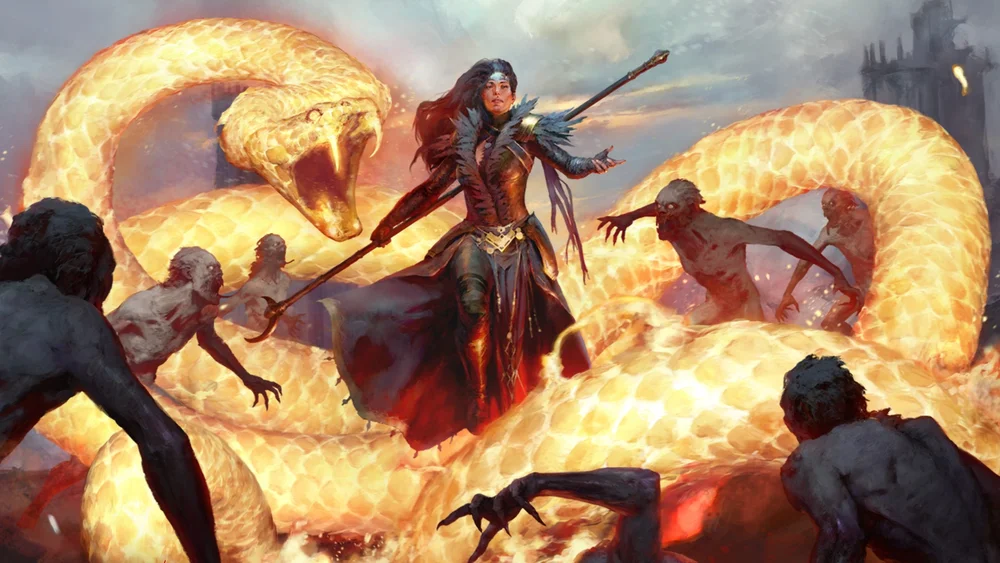
Diablo 4 Guide: PvP Modes
Another activity you can do after finishing the main campaign of Diablo 4 is to compete with other players in PvP modes. PvP modes are ways of testing your skills and gear against other players in various scenarios and environments. They can be fun and rewarding, but also risky and challenging.
To access PvP modes, you need to go to the Fields of Hatred. The Fields of Hatred are special areas of the game world where PvP is enabled and encouraged. They are marked by a red icon on the map and can be found in different regions of Sanctuary. In these areas, you can fight other players, complete quests and events, and earn unique loot and currency.
There are two main ways of engaging in PvP in Diablo 4: Arena and Open World.
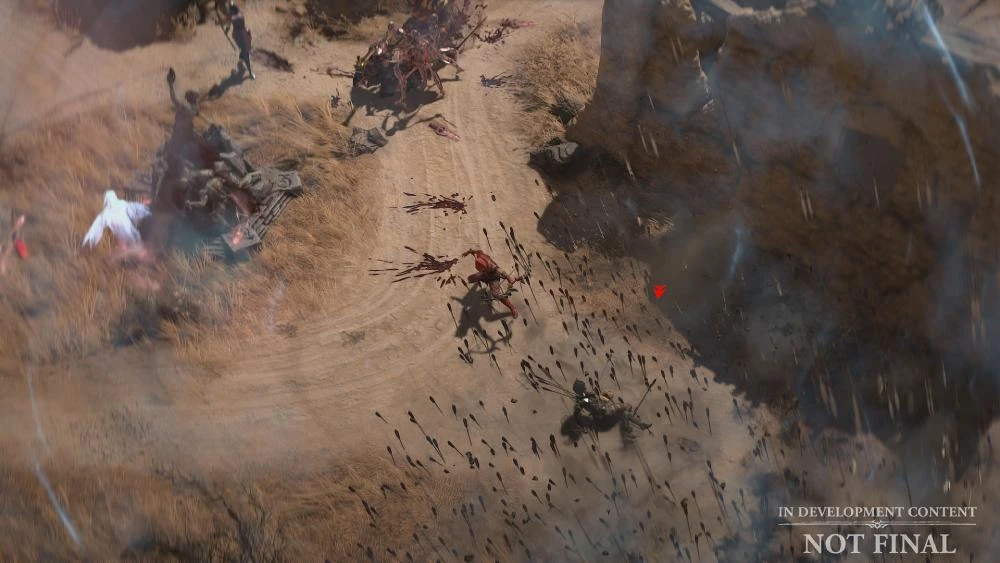
Arena
Arena is a system that allows you to enter special arenas and battle other players in fast-paced and intense matches. You can access Arena by going to an Arena Master NPC in a town or a campsite. There, you can choose from different modes and options, such as:
- Free-for-All: This mode is a classic deathmatch-style battle, where players are free to attack and be attacked by anyone. The goal is to get the most kills before the time runs out or the kill limit is reached.
- Team Deathmatch: This mode is similar to Free-for-All, but with teams of players instead of individuals. The goal is to get more kills than the opposing team before the time runs out or the kill limit is reached.
- Control Point: This mode is a territorial battle, where players have to capture and hold points on the map. The goal is to control more points than the opposing team for a longer time before the time runs out.
- Domination: This mode is a strategic battle, where players have to destroy or defend objectives on the map. The goal is to destroy all the objectives of the opposing team or prevent them from destroying yours before the time runs out.
- Capture the Flag: This mode is a tactical battle, where players have to steal and return flags from the enemy base. The goal is to capture more flags than the opposing team before the time runs out.
Arena matches can have different settings and rules, such as:
- Match Size: The number of players per match, which can range from 2v2 to 8v8.
- Match Duration: The length of time per match, which can range from 5 minutes to 15 minutes.
- Match Type: The type of match, which can be ranked or unranked. Ranked matches affect your PvP rating and leaderboard position, while unranked matches do not.
- Match Map: The map of the match, which can be chosen randomly or by vote. Each map has a different layout, theme, and features.
Arena matches reward you with experience, gold, items, and PvP points. PvP points are a special currency that can be used to buy PvP-specific gear and cosmetics from PvP vendors.
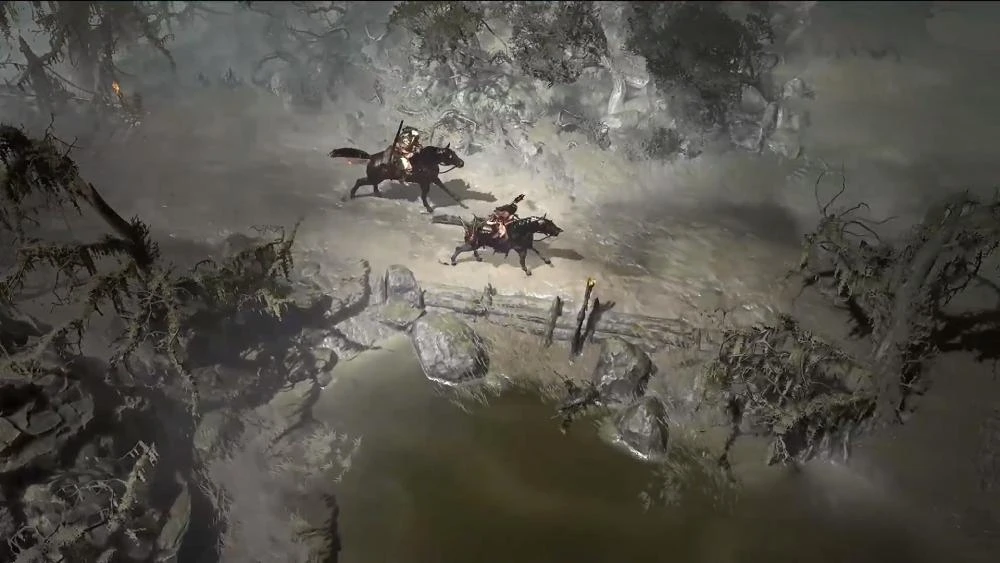
Open World
Open World is a system that allows you to fight other players in the Fields of Hatred without entering an arena. You can enable or disable Open World PvP by toggling a button on your character sheet. When enabled, you can attack and be attacked by any player in the same area who also has Open World PvP enabled.
Open World PvP has several features that make it different from Arena PvP:
- Shards of Hatred: Shards of Hatred are items that drop from enemies or chests in the Fields of Hatred. They can also be obtained by killing other players or completing quests and events. Shards of Hatred can be converted into Red Dust at an Altar of Extraction. Red Dust is a special currency that can be used to buy PvP-specific gear and cosmetics from PvP vendors.
- Altar of Extraction: Altar of Extraction are structures that can be found in the Fields of Hatred. They allow you to convert your Shards of Hatred into Red Dust. However, using an Altar of Extraction will alert other players in the area, who may try to stop you or steal your Shards of Hatred.
- Bounty System: Bounty System is a feature that assigns bounties to players who kill other players in the Fields of Hatred. Bounties increase your visibility on the map and make you more vulnerable to attacks from other players. Bounties also increase your rewards for killing enemies or completing quests and events.
- Clan System: Clan System is a feature that allows you to join or create a clan with other players who share your interests or goals. Clans can help you find allies or enemies in the Fields of Hatred. Clans can also compete with each other for clan rankings and rewards.
Open World PvP offers a lot of freedom and excitement for players who want to explore and fight in the game world. It also offers a lot of risk and challenge as you never know who you may encounter or what may happen.
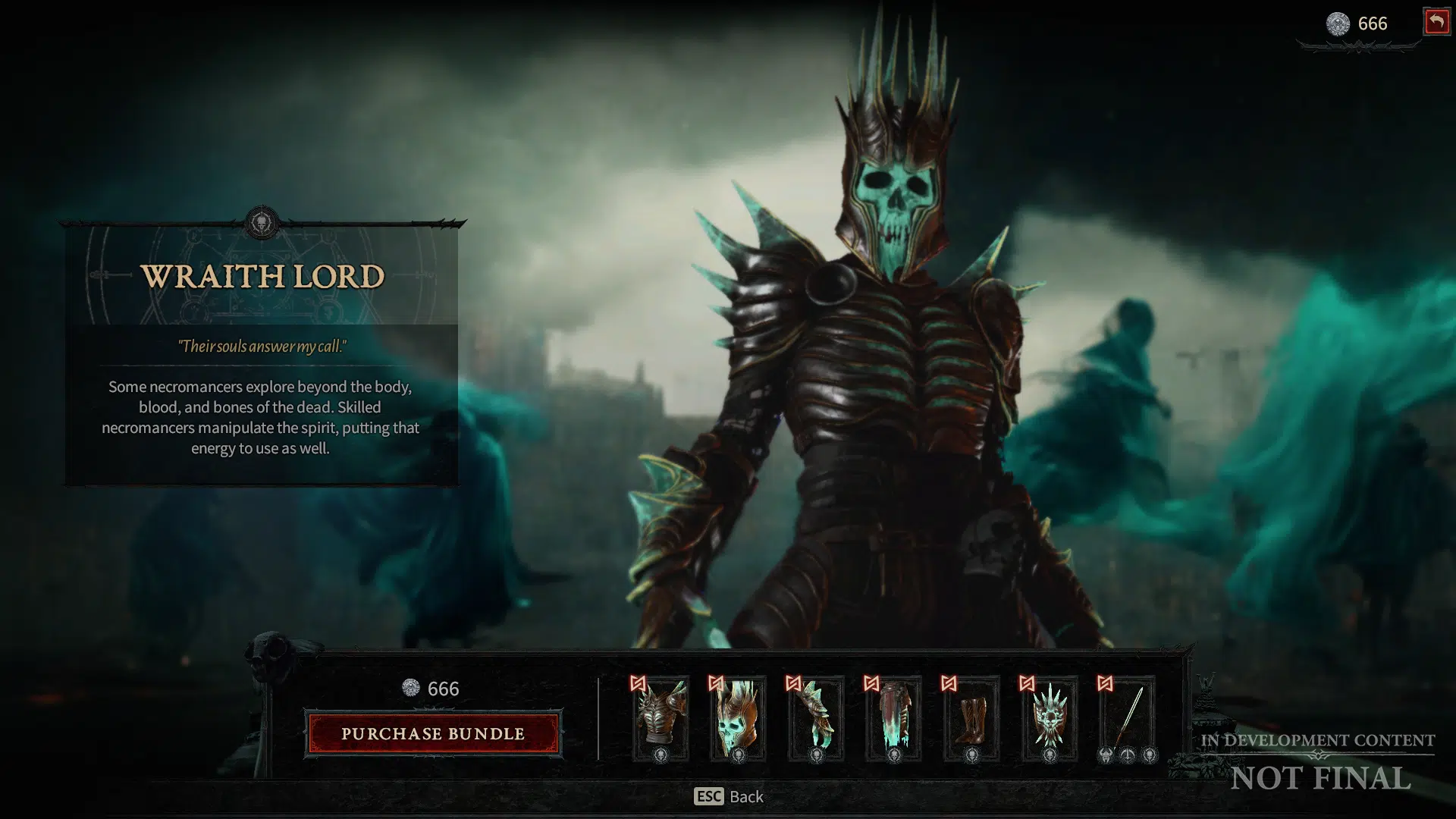
Diablo 4 Guide: Seasonal Events
We will discuss Seasonal Events in this portion of the Diablo 4 guide. Another activity you can do after finishing the main campaign of Diablo 4 is to participate in seasonal events. Seasonal events are special events that happen periodically throughout the year. They add new content and challenges for players to enjoy and complete.
Seasonal events have several features that make them different from regular events:
- Season Theme: Season Theme is a feature that changes some aspects of the game world according to a specific theme or concept. For example, some season themes may change the weather, lighting, music, or enemies in certain areas; some season themes may add new mechanics, items, or skills to certain classes; some season themes may introduce new quests, dungeons, or bosses to certain regions; etc.
- Season Journey: Season Journey is a feature that tracks your progress and achievements during a season. It consists of various tasks and goals that you can complete for rewards and recognition. For example, some season journey tasks may require you to reach a certain level, complete a certain dungeon, kill a certain boss, collect a certain item, etc.
- Season Rewards: Season Rewards are items or resources that you can obtain by participating in a season. They can be common or rare depending on your performance and participation. For example, some season rewards may include gold or experience; some season rewards may include crafting materials or consumables; some season rewards may include weapons or armor; some season rewards may include cosmetics or mounts; etc.
Seasonal events offer a lot of variety and novelty for players who want to experience something new and different in the game world. They also offer a lot of incentive and motivation for players who want to achieve something and show off their skills and accomplishments.
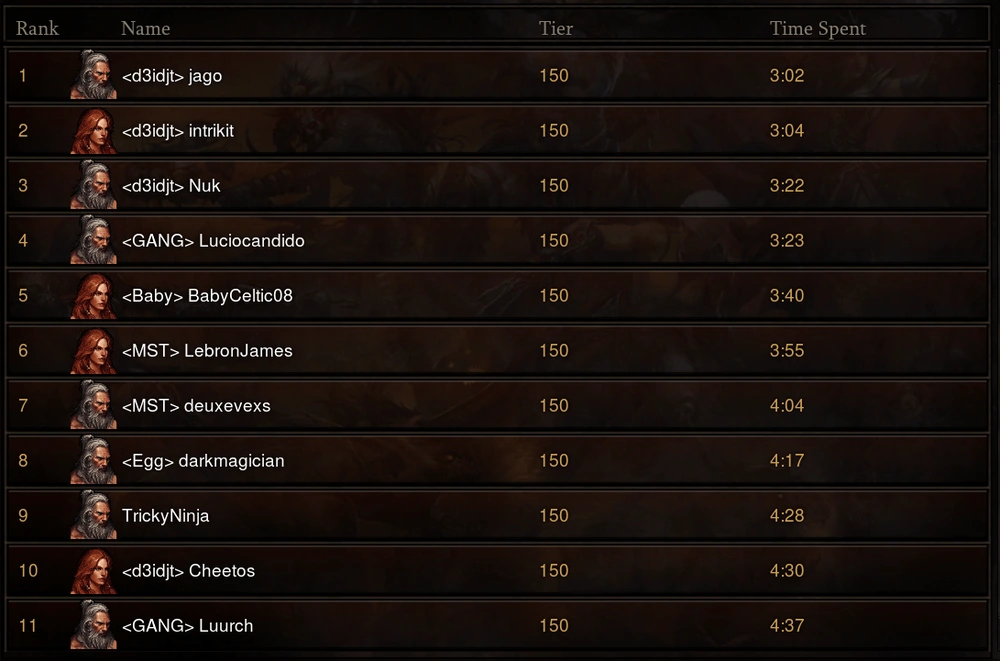
Diablo 4 Guide: Leaderboards
Another activity you can do after finishing the main campaign of Diablo 4 is to compete with other players in leaderboards. Leaderboards are rankings that measure and compare your performance and achievements in various aspects of the game.
Leaderboards have several features that make them different from regular rankings:
- Leaderboard Type: Leaderboard Type is a feature that determines what aspect of the game is being measured and compared. For example, some leaderboard types may measure and compare your level, experience, gold, or items; some leaderboard types may measure and compare your dungeon completion time, score, or difficulty; some leaderboard types may measure and compare your PvP kills, deaths, or rating; etc.
- Leaderboard Season: Leaderboard Season is a feature that determines how long a leaderboard lasts and when it resets. For example, some leaderboards may last for a week, a month, or a quarter; some leaderboards may reset every day, every week, or every month; etc.
- Leaderboard Rewards: Leaderboard Rewards are items or resources that you can obtain by ranking high on a leaderboard. They can be common or rare depending on your rank and participation. For example, some leaderboard rewards may include gold or experience; some leaderboard rewards may include crafting materials or consumables; some leaderboard rewards may include weapons or armor; some leaderboard rewards may include cosmetics or mounts; etc.
Leaderboards offer a lot of competition and recognition for players who want to measure and compare their skills and achievements with other players. They also offer a lot of incentive and motivation for players who want to improve and excel in various aspects of the game.
However, leaderboards will not be available at launch or in the first two seasons of Diablo 4. Blizzard has stated that they are working on making leaderboards meaningful and engaging for players, but they are not ready yet. Blizzard has also stated that they will introduce leaderboards when they feel they are appropriate for the game’s state and balance.
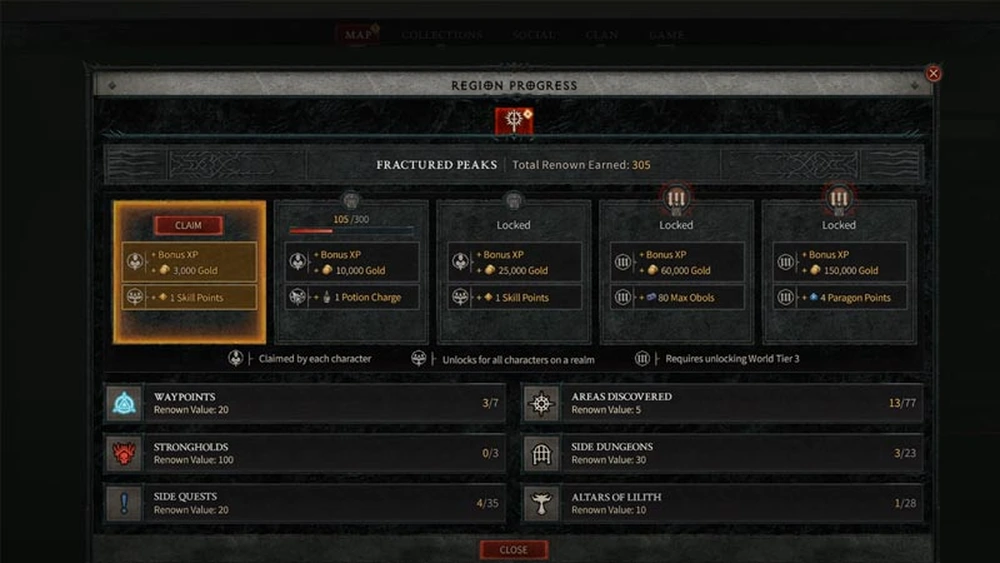
Diablo 4 Guide: Challenges
This part of the Diablo 4 guide will cover Challenges. Another activity you can do after finishing the main campaign of Diablo 4 is to complete challenges. Challenges are tasks or goals that you can set for yourself or accept from other sources. They can be simple or complex depending on your preference and ability.
Challenges have several features that make them different from regular tasks or goals:
- Challenge Source: Challenge Source is a feature that determines where a challenge comes from and who sets it. For example, some challenges may come from yourself and be self-imposed; some challenges may come from other players and be player-imposed; some challenges may come from NPCs and be NPC-imposed; some challenges may come from events and be event-imposed; etc.
- Challenge Type: Challenge Type is a feature that determines what kind of challenge it is and what it involves. For example, some challenges may be solo or group; some challenges may be PvE or PvP; some challenges may be timed or untimed; some challenges may be specific or general; etc.
- Challenge Difficulty: Challenge Difficulty is a feature that determines how hard a challenge is and what it requires. For example, some challenges may be easy or hard; some challenges may be simple or complex; some challenges may be short or long; some challenges may be common or rare; etc.
- Challenge Rewards: Challenge Rewards are items or resources that you can obtain by completing a challenge. They can be common or rare depending on the challenge source, type, and difficulty. For example, some challenge rewards may include gold or experience; some challenge rewards may include crafting materials or consumables; some challenge rewards may include weapons or armor; some challenge rewards may include cosmetics or mounts; etc.
Challenges offer a lot of variety and fun for players who want to try something new and different in the game. They also offer a lot of challenge and satisfaction for players who want to test their limits and overcome their obstacles. I hope this Diablo 4 Guide has helped you in your journey.
Diablo 4 is expected to be released on June 6, 2023 for PC, PlayStation 5, Xbox Series X/S.
There are five classes in Diablo 4: Barbarian, Druid, Necromancer, Rogue, and Sorceress. Each class has its own unique skills and abilities.
PvP modes are ways of testing your skills and gear against other players in various scenarios and environments. There are two main ways of engaging in PvP in Diablo 4: Arena and Open World. Arena is a system that allows you to enter special arenas and battle other players in fast-paced and intense matches. Open World is a system that allows you to fight other players in the Fields of Hatred without entering an arena.
Challenges are tasks or goals that you can set for yourself or accept from other sources. They can be simple or complex depending on your preference and ability. They can also reward you with items or resources if you complete them.
